Samsung DU7192 is a very budget-friendly solution that is primarily suited for typical Sunday viewing. The television performs best during daytime viewing, as ambient light effectively masks its less-than-ideal black levels. Thanks to the IPS panel, colours will maintain their hues and saturation even from an angle. The brightness of the Samsung DU7192 also suggests the usage it will excel in, namely television or YouTube, as HDR content on streaming platforms will be too dark. The biggest advantage of the television is the colour reproduction after calibration, as they are of good quality and allow for viewing content that is quite similar to what the film director intended. Praise for the image quality is also warranted for the quality of tonal transitions, which definitely stands out as a hallmark of this television, placing it well above its competitors. Regarding smaller features that can be considered good in the Samsung DU7192, compatibility with computers and the operating system are noteworthy. The former performs exceptionally well, and thanks to the correctly implemented chroma 4:4:4, the tested television can successfully serve as a monitor, as the readability of text will be at a high level. The system operates very smoothly and efficiently. During the tests conducted, there was no situation where it froze. Additionally, the default media player is excellent and handled practically every file we prepared for it. So, who is the Samsung DU7192 for? Primarily for less demanding individuals, for whom the television serves merely as a small escape in their daily routine. The DU7192 Samsung features a modern and elegant design that will fit into most interiors. The matte frame finish adds style to the device and makes it not only a functional but also an aesthetically pleasing element of living room decor. It’s worth noting that the Samsung DU7192 has an exceptionally thin profile, making it easy to mount on the wall, thereby saving space in the room. This is an ideal solution for those who wish to enjoy minimalism in their interiors without compromising on high-quality equipment.
- Matching (Score)
- Our verdict
- TV appearance
- Where to buy
- Contrast and black detail
- HDR effect quality
- Factory color reproduction
- Color reproduction after calibration
- Smoothness of tonal transitions
- Image scaling and smoothness of tonal transitions
- Blur and motion smoothness
- Console compatibility and gaming features
- Input lag
- Compatibility with PC
- Viewing angles
- TV efficiency during daytime
- Details about the matrix
- TV features
- Apps
- Playing files from USB
- Sound
Samsung DU7192 (IPS) vs Hisense E7Q / E79Q
Direct compare
DU7192 / DU7172
E7Q / E79Q

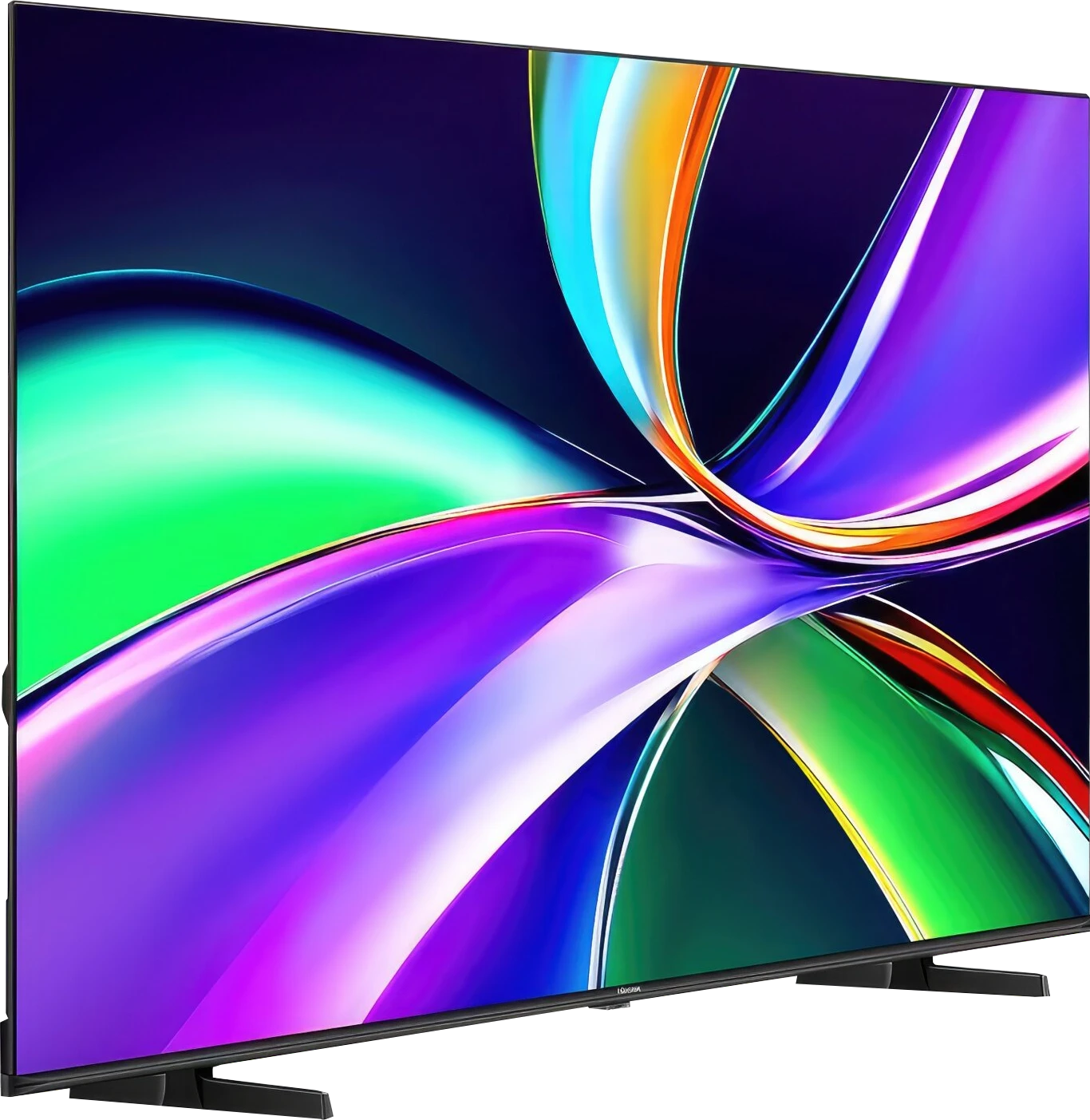
Panel type: LCD IPS
Resolution: 3840x2160
System: Tizen
Model year: 2024
Complete the survey to find out the result

Panel type: LCD VA
Resolution: 3840x2160
System: VIDAA
Model year: 2025
Complete the survey to find out the result

Overall rating
5.0
6.1
Movies and series in UHD quality
4.6
6.2
Classic TV, YouTube
4.2
5.9
Sports broadcasts (TV and apps)
4.8
5.1
Gaming on console
6.4
7.1
TV as a computer monitor
6.0
3.0
Watching in bright light
2.8
5.2
Utility functions
5.5
8.7
Apps
8.7
7.7
Sound quality
5.4
6.3
Complete the survey to find out what fits your preferences
Advantages
Excellent cooperation with the computer - low input lag, chroma 4:4:4
Faithful colour reproduction after calibration
Minimal colour degradation at an angle
Smooth operation of the Tizen system
Good black and contrast
QLED (PFS LED) – vivid and saturated colours, DCI-P3 coverage of approx. 92%
Many features for gamers: ALLM, VRR, low input lag, Game Bar
Supports 120Hz at 1080p!
VIDAA system – easy to use, with AirPlay, Screen Mirroring and voice search
USB recording from built-in tuners
3.5 mm jack output and component inputs for older devices
Supports multiple audio formats including Dolby Atmos and DTS:X
Attractive price
Disadvantages
Low brightness of HDR materials
No tone transition smoothing feature
Average image scaling
Dolby Vision adds little (which is a shame)
Poor digital image processing: lack of image enhancement features, average upscaling
Strong dithering when connected to PC (colourful fonts)
The build quality of our unit was very average
Our verdict
Hisense E7Q / E79Q is a type of television that doesn’t promise miracles – and maybe that's why it can pleasantly surprise. It doesn’t try to pretend to be high-end equipment; it just gets the job done. If you’re looking for a cheap screen for everything that can handle Netflix, consoles, and morning YouTube while enjoying your coffee, this model makes a lot of sense. The VIDAA system has matured over the past few years, and it’s clear the manufacturer is learning. We have AirPlay, screen mirroring, and voice search in Polish – everything works, maybe not at lightning speed, but smoothly enough not to be annoying. You won’t find thousands of apps like in Google TV, but the most important ones are at hand. It’s a system that's meant to be simple and practical, not overloaded with unnecessary gimmicks – and in that sense, it really holds up. There’s something interesting for gamers too. The E7Q / E79Q offers low input lag, automatic low latency mode (ALLM), VRR support up to 60 Hz, and even a 120 Hz mode at 1080p resolution. It’s not a screen for hardcore e-sports enthusiasts, but if you just like to fire up your console in the evening and play a few rounds, this TV will do its job without complaining. And what about picture quality? We won’t deceive you – it’s not spectacular, but there’s also no reason to complain. A brightness of around 350 nits won’t impress, but the contrast thanks to the VA panel can really surprise positively. The blacks are quite deep, and the colours have a pleasant intensity, especially in SDR mode. It’s a bit of a shame that Dolby Vision doesn’t add much – because if it worked as it should, we’d have a TV that could confidently be recommended for HDR viewing as well. On the other hand, it’s hard to expect that in this price range. It’s simply a fair, well-priced screen that doesn’t make a fuss about itself but can deliver solid picture quality and surprisingly good features. And while it’s not perfect, after a few days of use, it’s hard not to think, “gee, this cheap Hisense really holds its own.”
TV appearance





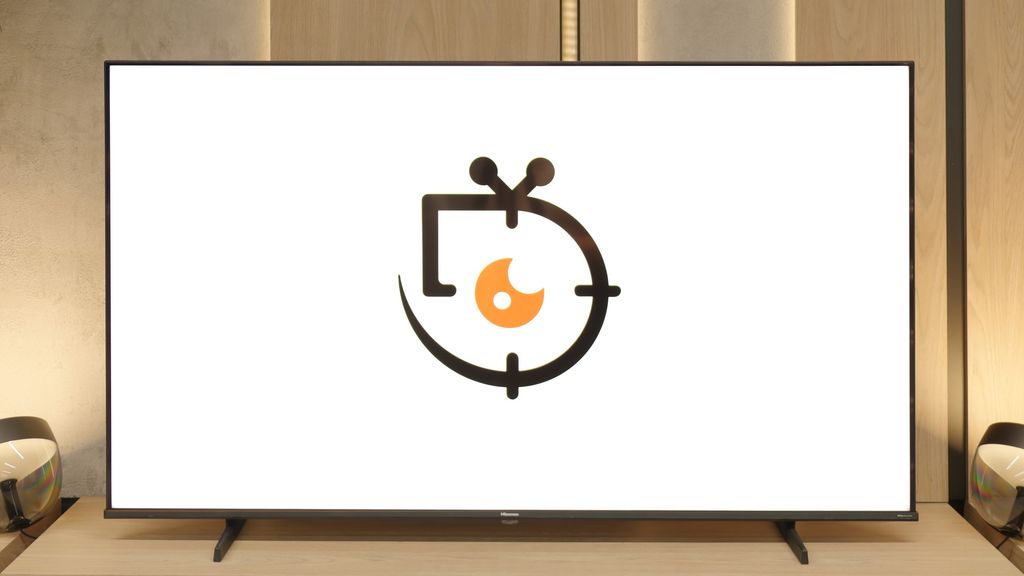
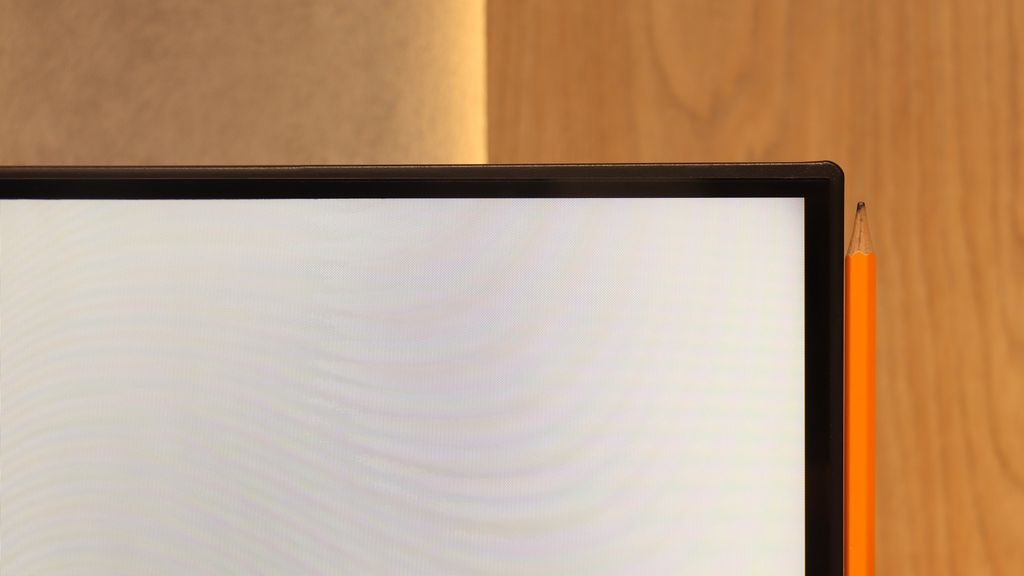
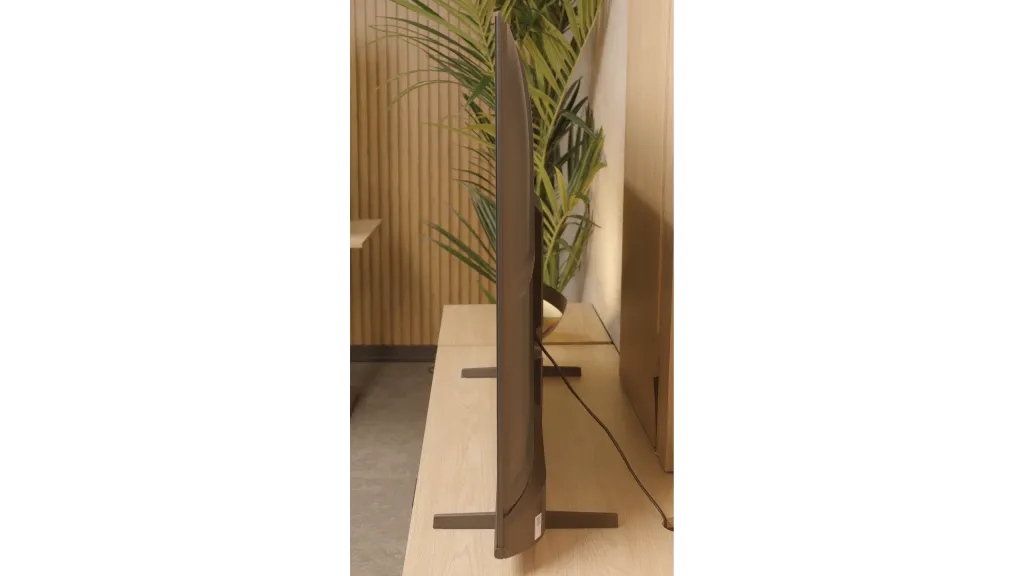
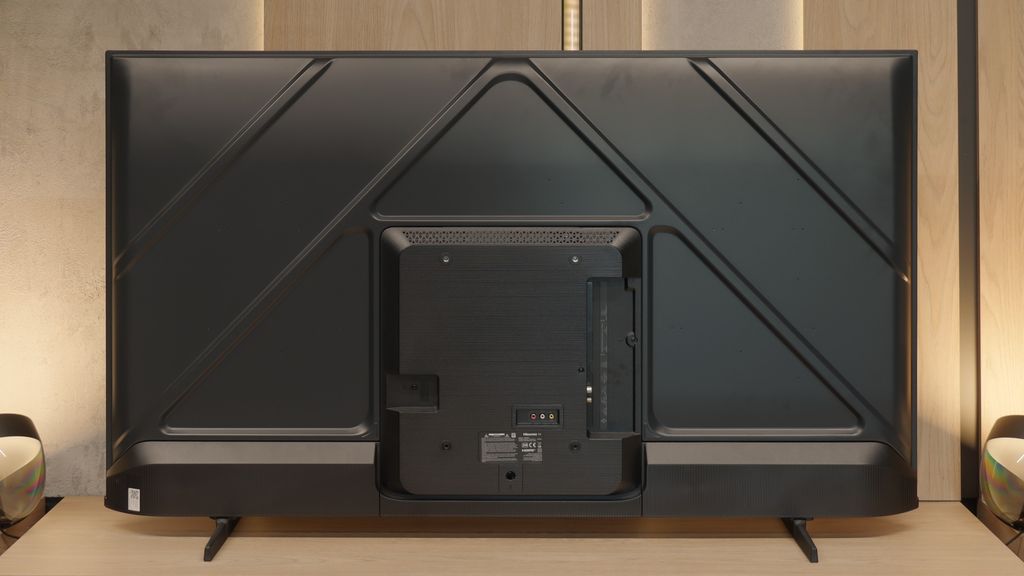
Contrast and black detail
1.6/10
5.7/10
Local dimming function: No
Local dimming function: No
Contrast:

Result
800:1

Result
950:1

Result
900:1

Result
900:1

Result
800:1

Result
5,400:1

Result
5,450:1

Result
3,800:1

Result
5,000:1

Result
4,350:1
Halo effect and black detail visibility:

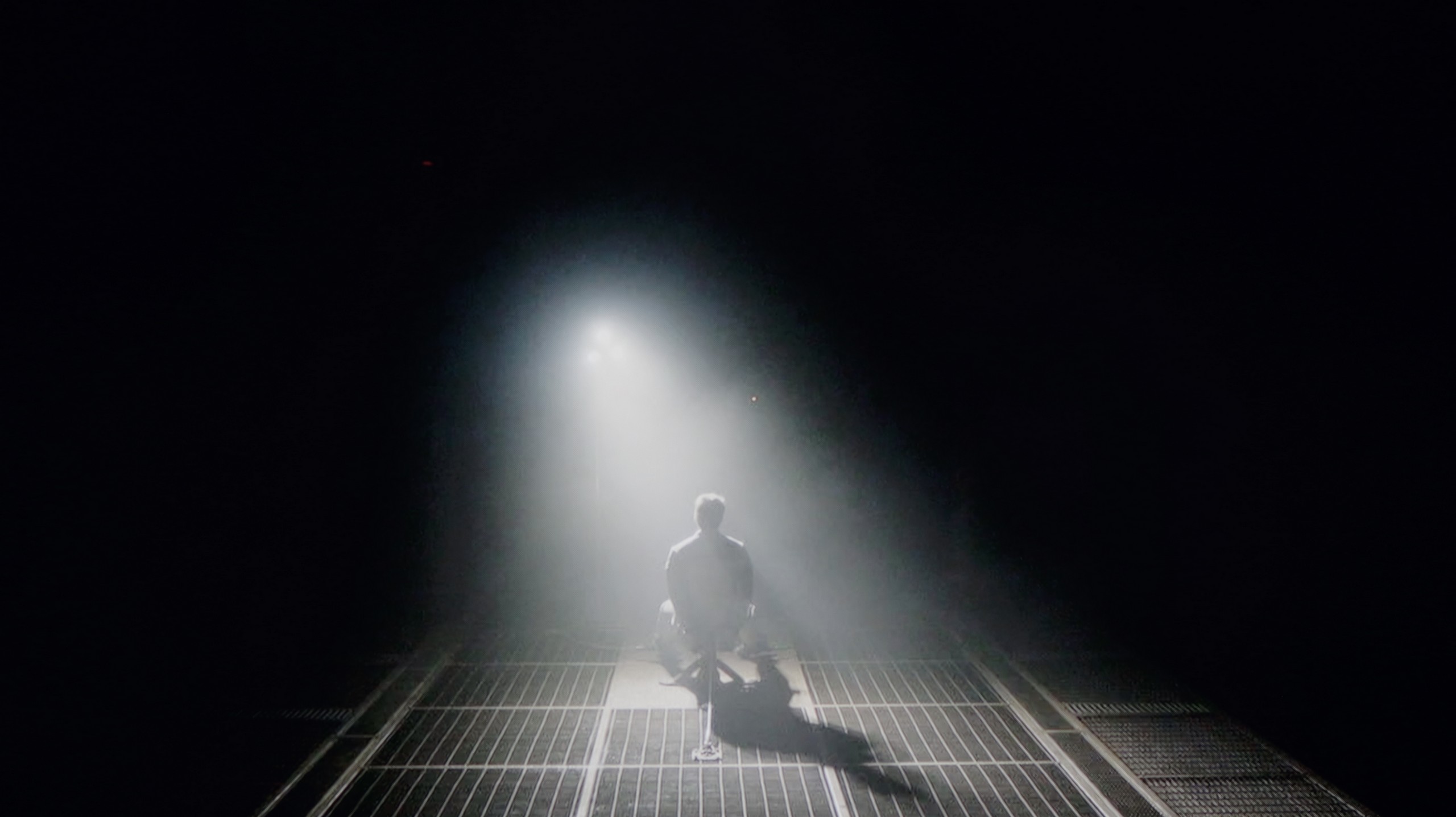
Samsung DU7192 uses an IPS panel, which, as can be seen, does not boast the highest contrast and black levels. Measurements indicated that the tested television can only provide maximum values of 950:1, which is a very low result and unlikely to promise high efficiency in the context of home cinema. However, it is worth noting that we are testing the 43" version, so a different size may have a different type of panel. Regarding the panel used in Samsung DU7192, it belongs to the lower-end categories of IPS screens, as these can deliver much higher results. However, it should also be remembered that we are dealing with a very budget-friendly unit, which will primarily find its use in a secondary room, or will serve as a cheap receiver for a senior, for whom the quality of the displayed image is often irrelevant. In the first image from the film "Oblivion," we primarily see navy black, but also very good separation of lights coming from the spotlight. For better visibility, we recommend taking a closer look at the image in zoom. And just as there was no significant reason to deny the TV's performance in the first scene, in the second scene from "Sicario 2," it can be said that this does not require further comment. Due to the practically zero contrast, the scene lacks any depth. There are also very noticeable bright spots in the corners of the panel, which are typical of budget units. On the positive side, the detail sharpness is quite good, however, that is searching for any positivity against the backdrop of disappointing results.
Hisense E7Q / E79Q in our test variant of 58 inches is equipped with a VA panel, which has a huge impact on the reception of contrast and black levels in films or series. Thanks to such a panel, you can expect decent contrast and a stable visual effect, which works really well in most scenes. In measurements, we obtained values reaching around 6000:1, which in this price range is considered a solid result. However, it’s important to remember that this is not a design with local dimming, so don’t expect deep, “pitch-black” blacks known from more expensive models. In some shots, the black may have a slightly blue hue, which is completely natural for this technology and price. This is, however, a compromise that doesn’t bother during everyday viewing – especially if we watch in the evening with slightly dimmed light.
HDR effect quality
3.4/10
5.1/10
Luminance measurements in HDR:

Result
200 nit

Result
228 nit

Result
246 nit

Result
233 nit

Result
245 nit

Result
300 nit

Result
329 nit

Result
379 nit

Result
389 nit

Result
397 nit
Scene from the movie “Pan” (about 2800 nits)


Scene from the movie “Billy Lynn” (about 1100 nits)


Static HDR10


Dynamic: HDR10+
Dynamic: Dolby Vision


HDR luminance chart:
Hisense E7Q / E79Q
HDR luminance
Samsung DU7192 (IPS)
HDR luminance
The maximum luminance in HDR materials is 245 nits, which is often surpassed by even lower results. Such values will definitely not be sufficient for comfortable viewing of HDR materials, due to the lack of appropriate image dynamics and colour distortions caused by the low brightness of the unit. Although the manufacturer has equipped its device with an HDR format offering dynamic metadata, HDR10+, which is what we're talking about, is very rarely used compared to Dolby Vision, which Samsung has not yet introduced in its televisions. It’s also worth mentioning that Samsung DU7192 offers only 82% coverage of the wide DCI-P3 colour gamut, which is another reason we shouldn't provide a signal in a wide dynamic range, as colour losses will be very noticeable. Samsung DU7192 delivers high-quality image that will satisfy most users.
Hisense E7Q / E79Q is a mid-brightness TV, with a peak luminance level of around 350-380 nits. This is the absolute minimum that allows viewing HDR content in a way that's close to the creators' intentions, though without a distinct "wow" effect. The results of synthetic tests on white test patterns were confirmed in practice – in movie scenes, the bright parts of the image are stable and fairly even, but it's hard to talk about a true "burst of light" here. In everyday use, such as when watching Netflix or YouTube, the HDR effect is acceptable and is more than sufficient for most users. However, it must be said clearly – this is not the level of top-end screens, and one shouldn't expect that at this price. Fortunately, the Hisense E7Q / E79Q has an advantage that allows it to score quite a few points: it's a QLED panel of the PFS LED type, using an additional phosphor layer that improves colour reproduction. The measured range of the DCI-P3 colour gamut is around 92%, which means that the colours in most scenes are vibrant, well-saturated, and pleasing to the eye, especially for this price bracket.
Factory color reproduction
4/10
5.2/10


Factory Mode
After calibration
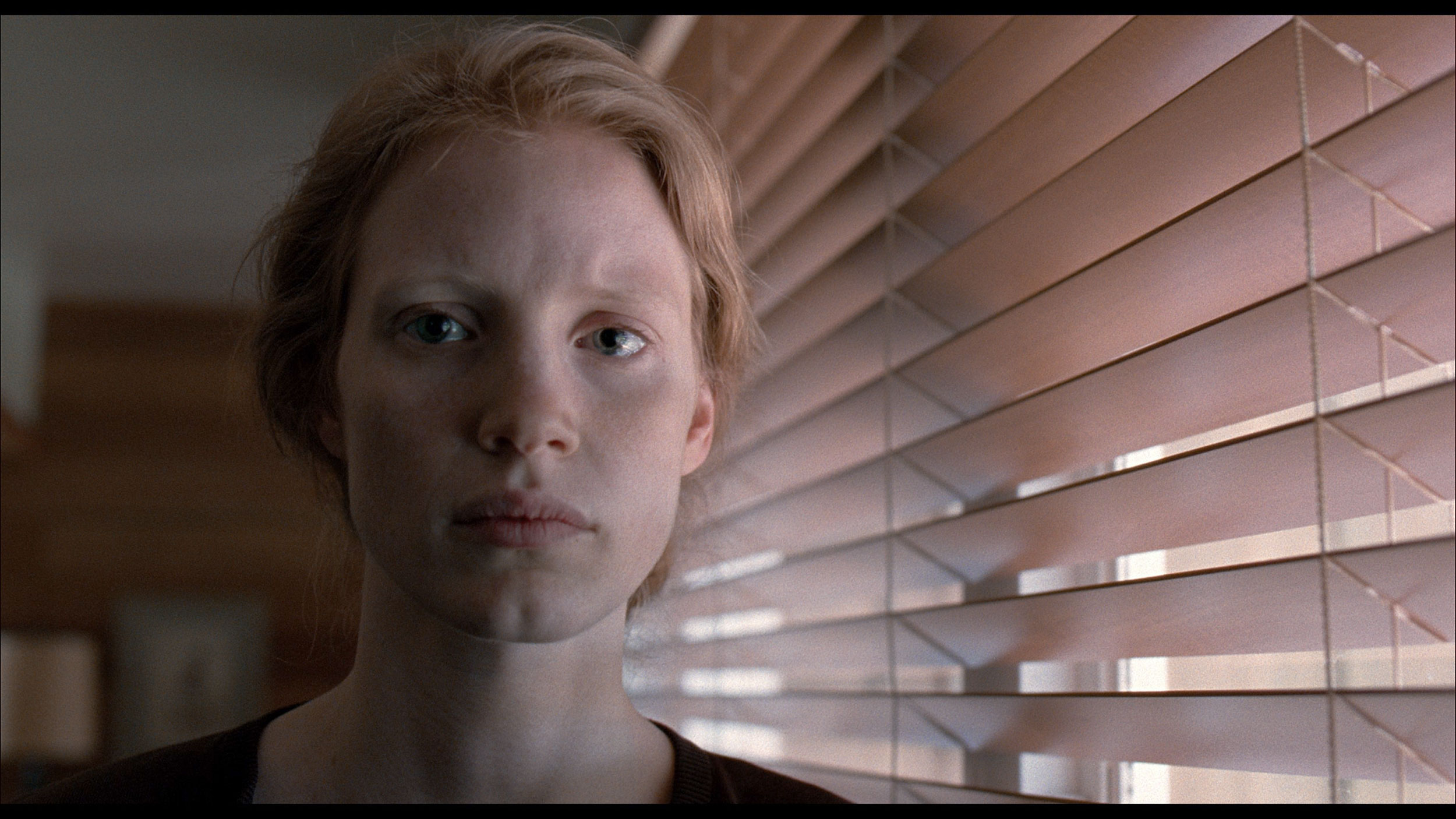
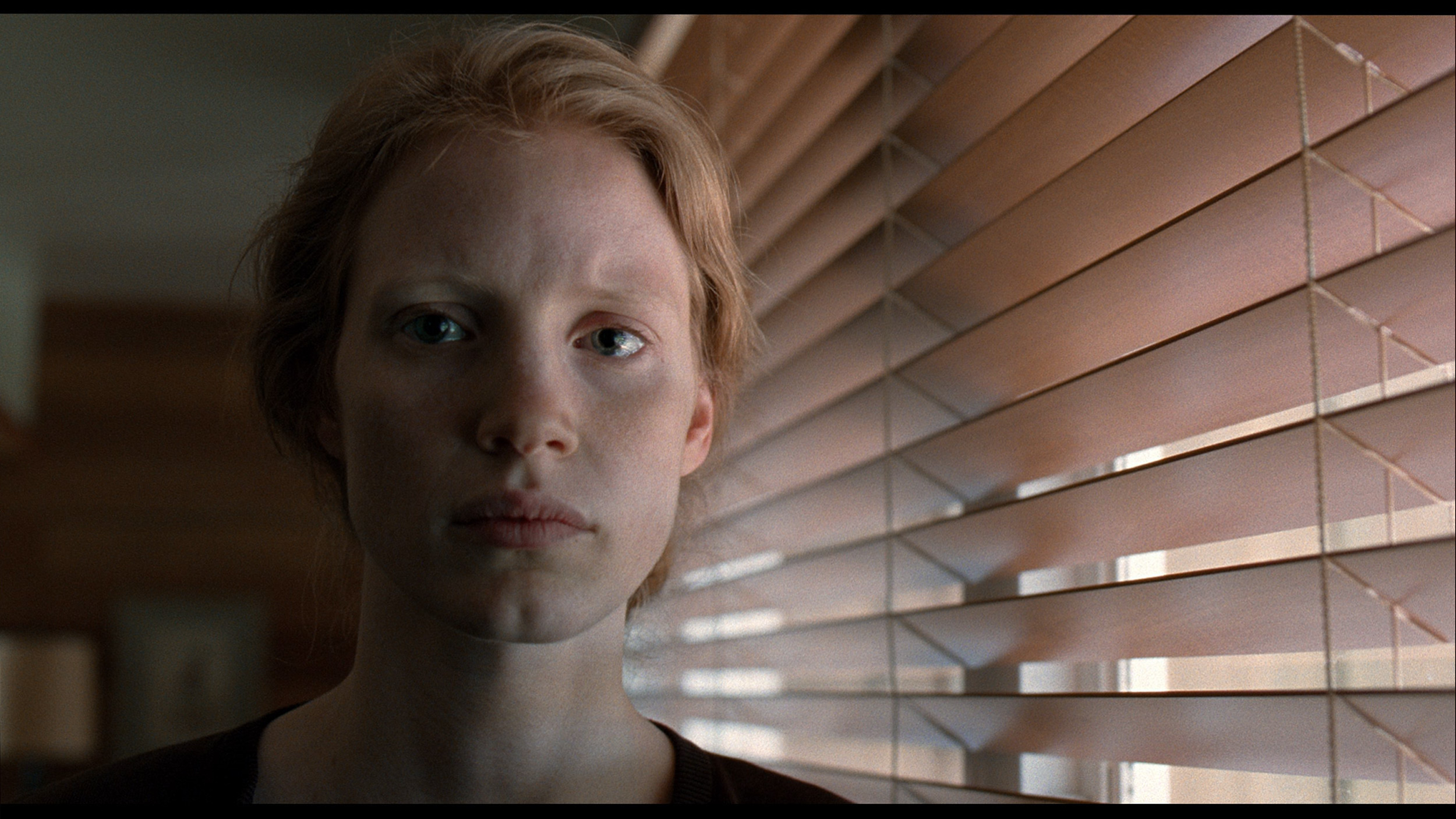
Factory Mode
After calibration
The best factory mode we used throughout the testing process was "Filmmaker". This, like the vast majority of modes, had its flaws. Starting with the most basic graph, which is white balance, we can notice a significant dominance of red colour, both in SDR mode and HDR. Although in the latter there was also some green, which didn’t have a major impact on the overall perception. A graph with such results, in both cases, gives us an image characterised by strong yellowing, clearly visible on whites and on the faces of the actors. Another important graph, if not more important, is gamma. This, which is supposed to control contrast in materials with a standard colour palette, was quite good in factory mode with one "but" regarding the beginning. In the darkest scenes, it was significantly lowered, resulting in strong brightening, which left the film lacking contrast and suspense overall. As we mentioned, HDR materials regarding white balance remained at a similar level. The main change is the EOTF curve graph. At the very beginning, we can observe a bulge, which, just like in the case of gamma, strongly brightened the darkest scenes. However, after that, the graph significantly changed its characteristics and the measured result dived below the reference line, causing the film to lose even more dynamism.
In Filmmaker mode, the Hisense E7Q / E79Q television really managed to impress. After the first measurements, it turned out that the white balance was quite well tuned, with the only minor deviation being a slight tendency towards a purple hue, which we mentioned earlier. However, this did not significantly impact the overall character of the image – it remained cohesive and pleasant to view. A much bigger issue was the brightness characteristics (gamma) in SDR content and the EOTF curve in HDR films. The television clearly brightened the image, flattening contrast and taking away depth. Gamma values could drop from the reference 2.4 down to around 1.9, making the image look as though it was covered with a thin, milky layer. Fortunately, this is a problem that can be relatively easily corrected through calibration.
Color reproduction after calibration
5.9/10
7.4/10




Samsung has equipped even its lowest-end TVs with advanced tools for carrying out the calibration process. So we got to work, and the results of our efforts are more than satisfactory. The white balance, which previously had a strong yellow tint in both scenarios, now looks much, much better, even if there are slight deviations from the norm. The picture will still look significantly cleaner than it did before the calibration process. We managed to model the gamma in SDR materials very well, allowing the image to be as contrasty as the TV permits. The EOTF curve has also changed its face and doesn’t brighten or darken the image in such a drastic manner. However, it is worth mentioning that in the case of HDR materials, the deltaE errors are still very high, but this is due to the unit's insufficient brightness.
The biggest beneficiary of calibration in the case of the Hisense E7Q / E79Q was undoubtedly the SDR mode. It managed to achieve almost perfect image quality – most of the errors in the Color Checker test dropped below a value of 3, and often even 2, which is a remarkable result for this class of equipment. The biggest improvement came from aligning the brightness characteristic (gamma), which made the image no longer look blown out and regained natural depth. In HDR content, it was also possible to improve the colours and eliminate the purple tint that we mentioned earlier, but errors in the Color Checker measurements were still noticeable. This is due to the fact that – as is often the case with Hisense televisions – the screen manipulates brightness quite strongly, overexposing some colours. This was also indicated by the EOTF curve, which was slightly above the reference values, suggesting these minor issues with excessive brightening. Despite this flaw and the construction limitations that arise with HDR content, the Hisense E7Q / E79Q gained quite a bit after calibration. In everyday use, the television presents a coherent, natural, and pleasant-to-the-eye image, and the difference compared to the factory settings is indeed huge.
Smoothness of tonal transitions
7.7/10
8.5/10





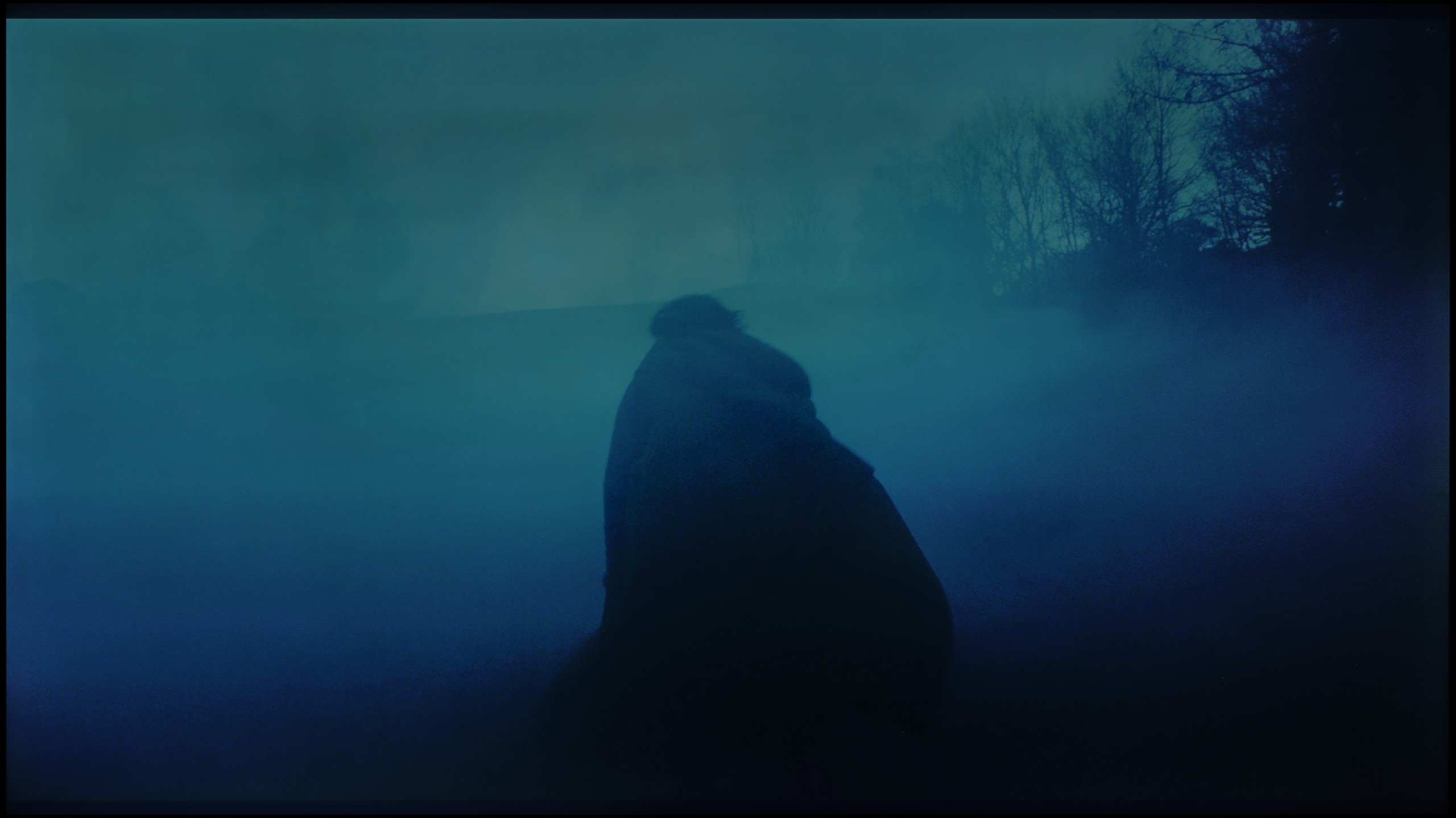






The place where we must praise the TV Samsung DU7192 is our procedure for checking the smoothness of tonal transitions. The tested TV handled them very smoothly, and in practice, there is nothing that could cause us any inconvenience. The only place where something can be noticed is in the last scene and slight posterisation in the reds on the left side. At this point, we must mention one more issue, which is no longer related to this testing procedure. Namely, on the vast majority of scenes, there are noticeable strong inconsistencies in the backlighting, which will be much more bothersome when watching in the evening.
For a budget TV, the Hisense E7Q / E79Q performs really well with a challenging element like the smoothness of tonal transitions. In most scenes, the colours blend together naturally, without noticeable jumps or artificial edges. The brighter parts of the image stand out particularly well – the transitions are smooth and pleasant to the eye. Minor issues arise only with very dark shades of grey, where you can notice slight banding. However, this is a detail that doesn’t affect the overall perception of the image. For a TV in this price range, the result is more than decent.
Image scaling and smoothness of tonal transitions
3.2/10
5/10
Smooth transition function

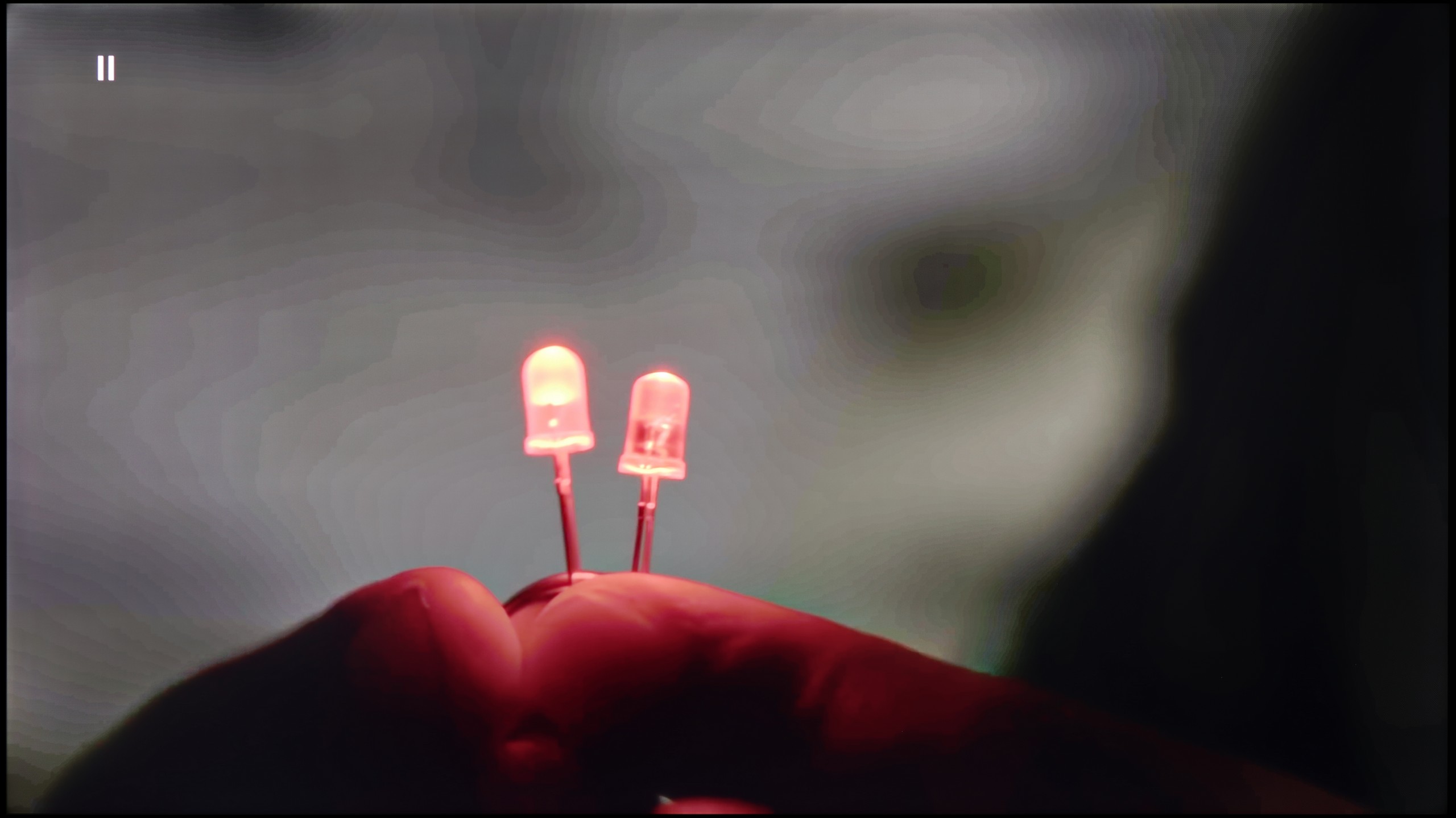
Image without overscan on the SD signal


Let's return for a moment to the tonal transition smoothing function. We can set it in only two ways - off and auto. As you can easily guess, the first of these causes significant issues with gradation. However, if we set the second option, both movies and series will offer us smooth colour transitions. It is worth mentioning, though, that this function has its drawbacks. It heavily interferes with the director's intent, softens the film grain effect, and worse, often misinterprets small details, blurring them as well. Consequently, we consider that this function does not exist and do not recommend using it, as this is how the smoothness of tonal transitions was tested on the tested display.
The next thing we will check in this paragraph is the image scaling process, which is extremely important when watching material in lower resolution. Unfortunately, as this is the manufacturer's lowest model, this function doesn't work very well. All details are heavily blurred, and a characteristic white halo forms around the characters.
In the case of Hisense E7Q / E79Q, upscaling and digital image processing are not the strongest points of this television. It is evident that the manufacturer has opted for simplicity rather than advanced image processing algorithms. The television does not offer any features that smooth tonal transitions or systems that enhance image clarity, which makes lower resolution materials look quite raw. Subtle compression edges can be seen on the screen, which better processors in other models can effectively hide.
During the testing of HD materials, we noticed that the E7Q tries to artificially boost detail, which sometimes works and other times has the opposite effect – the image becomes soft, slightly blurred, and at times even "watery." There is no aggressive sharpening that ruins naturalness, but there is also a lack of finesse in detail integration that better image processors provide.
Blur and motion smoothness
4.9/10
4.8/10

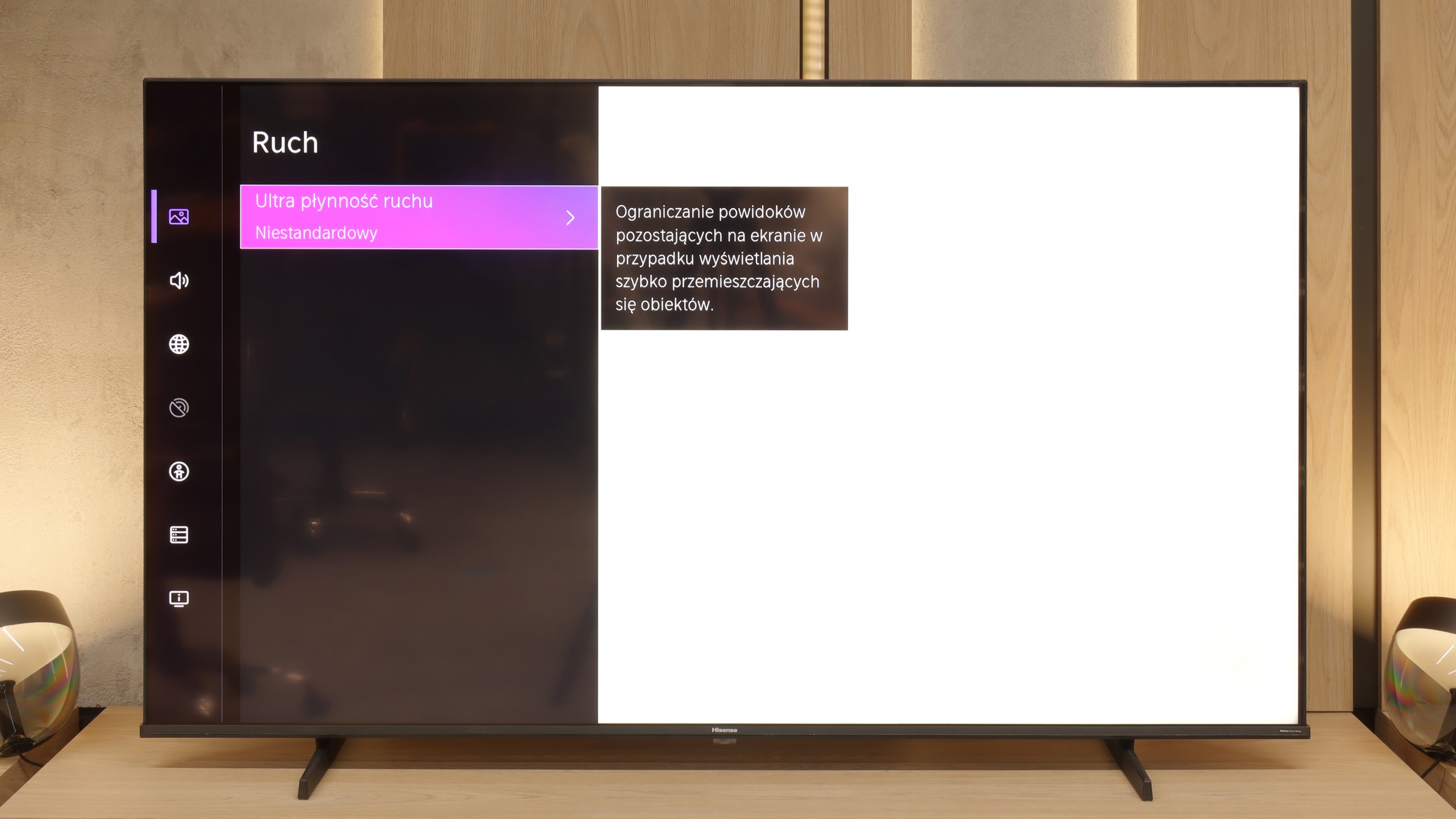
Blur (native resolution, maximum refresh rate):



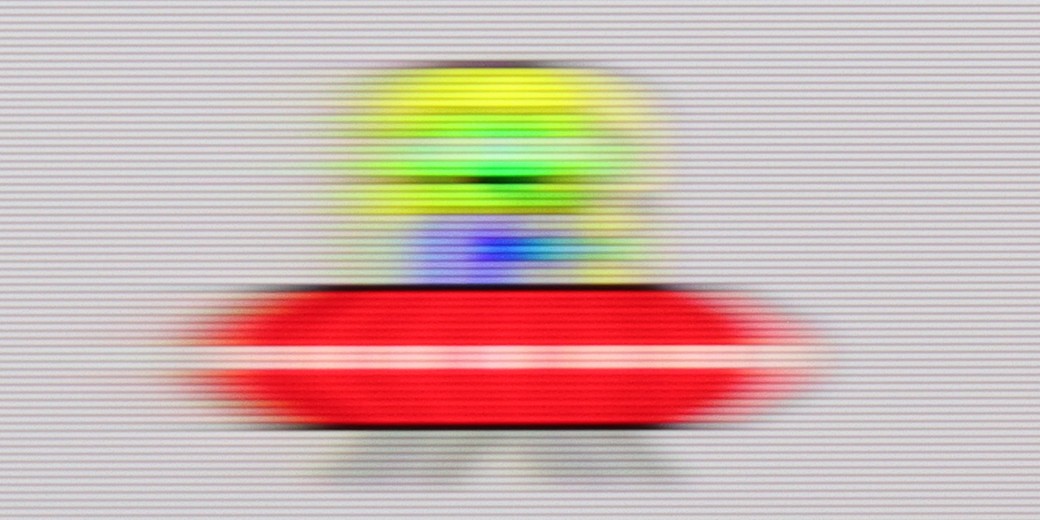
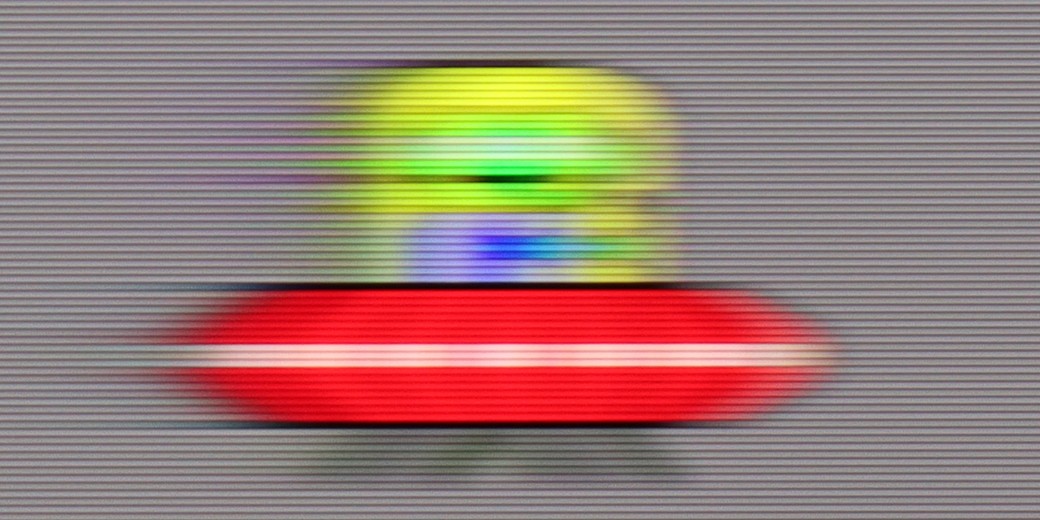
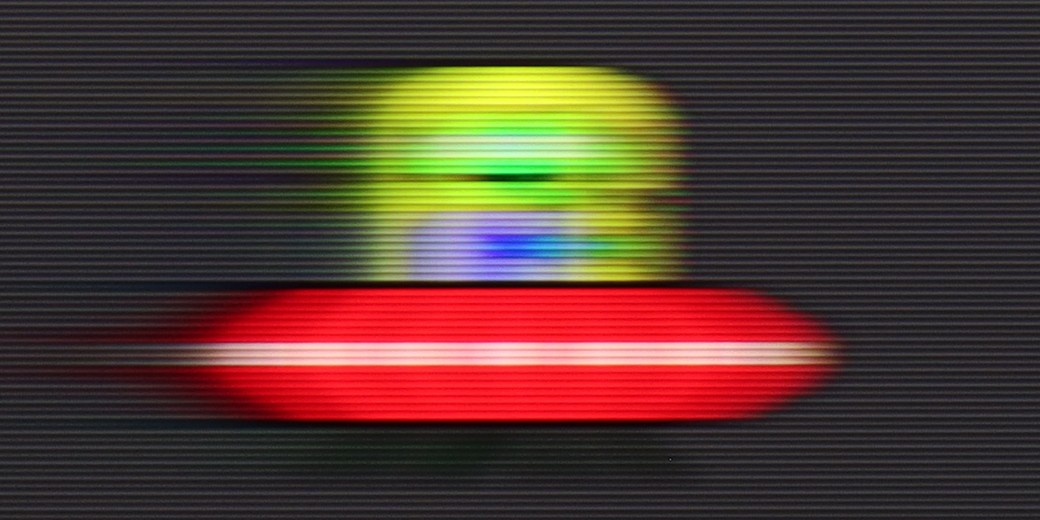
Smużenie ():
Smużenie (1080p@120Hz):

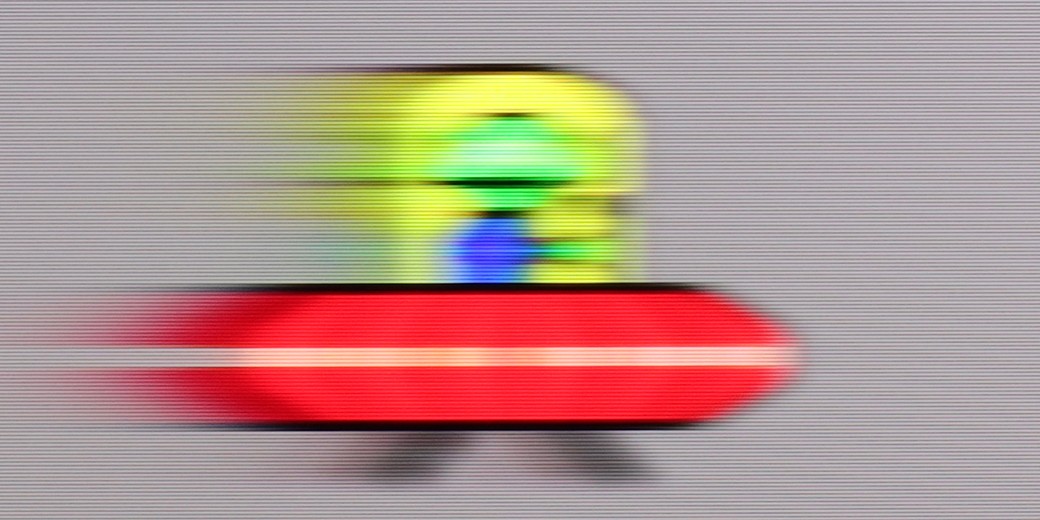
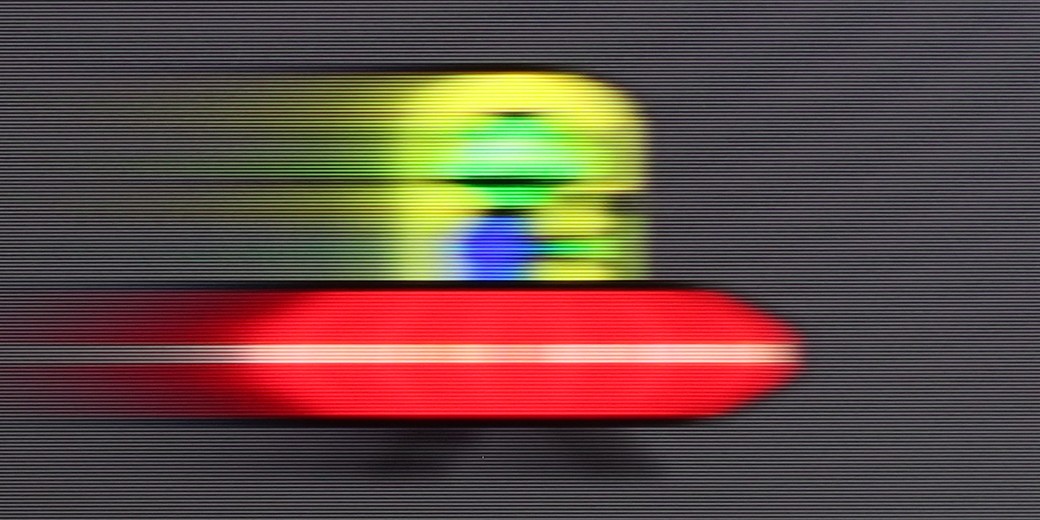
Despite the fact that Samsung DU7192 is the lowest model in the manufacturer's portfolio, it has implemented a motion smoothing system. Although it is quite limited in features compared to higher models, its very existence is a significant plus in the context of competition in a similar price range. The maximum refresh rate that we will give to the tested television is 60 Hz, which is entirely sufficient for films and series, although not when it comes to sports. In the motion smoothing menu, we find two functions responsible for improving smoothness. These are "Motion Blur Reduction" and "Clear Motion (LED)". We'll discuss the latter a bit later. Let's focus on the former, as it is quite mysterious. Unfortunately, despite its presence, we did not find any usefulness. At each of the settings, the picture looked the same, characterised by the typical judder known from materials recorded at 24 fps.
The panel Samsung DU7192 features an average response time. It's worth mentioning that due to this specific type of panel, it is better than VA panels in a similar price range. Therefore, it can be said that it won't be the worst in terms of watching sports.
Hisense E7Q / E79Q is a television with a 60 Hz screen, so sports fans in 4K may feel a slight disappointment – you simply won’t see such smooth images here as in more expensive models with higher refresh rates. Fortunately, when it comes to movies, the situation is much better. Cinematic materials recorded at 24 frames per second can be displayed here using a motion smoothing feature, allowing the user to adjust the picture to their own preferences – more cinematic with visible frames or smoother, in a theatrical style.
Console compatibility and gaming features
4.2/10
6.3/10
- ALLM
- VRR
- VRR range48 - 60Hz
- Dolby Vision Game Mode
- Correct implementation of HGIG
- 1080p@120Hz
- 1440p@120Hz
- 4K@120Hz
- Game bar

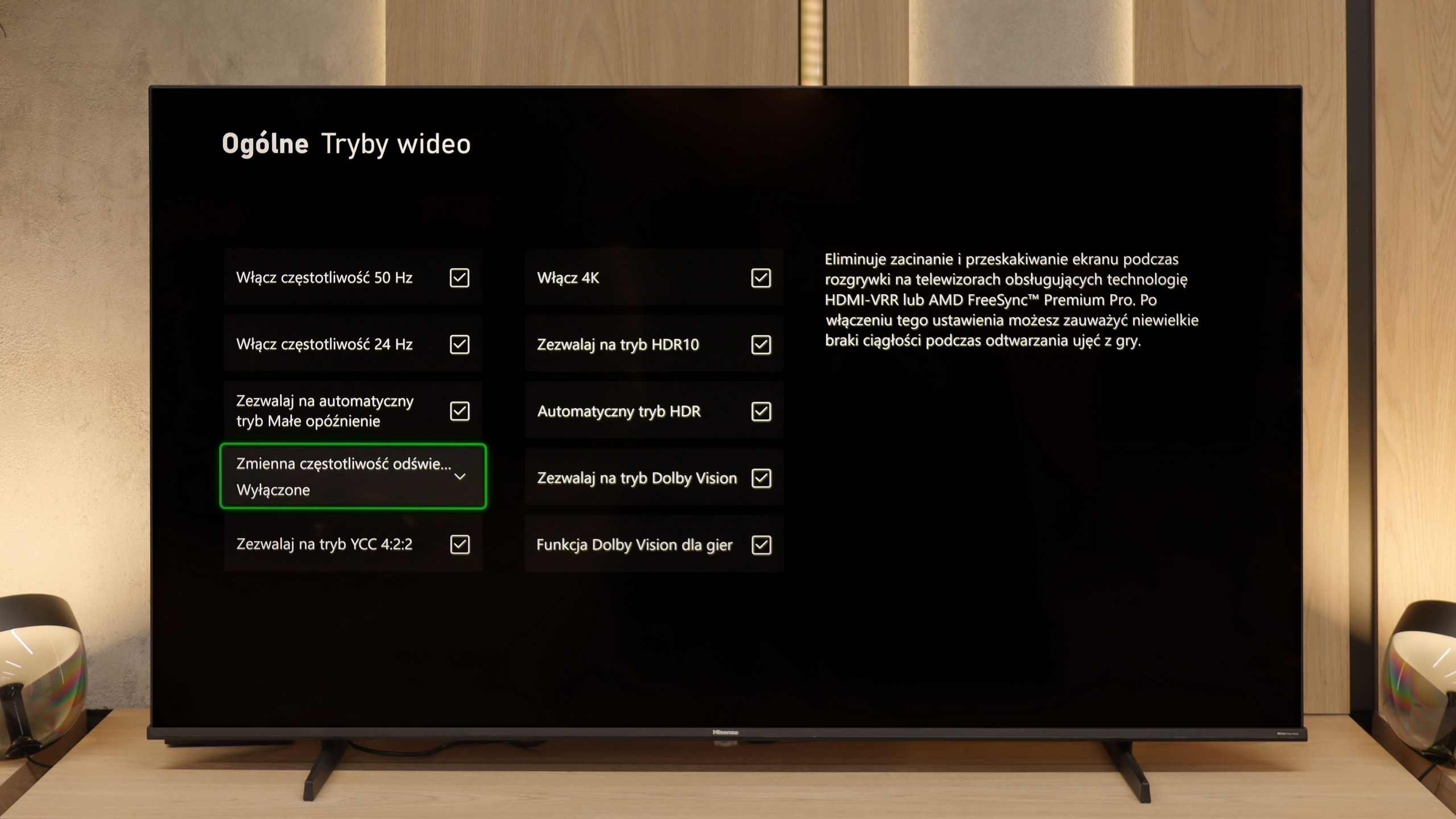

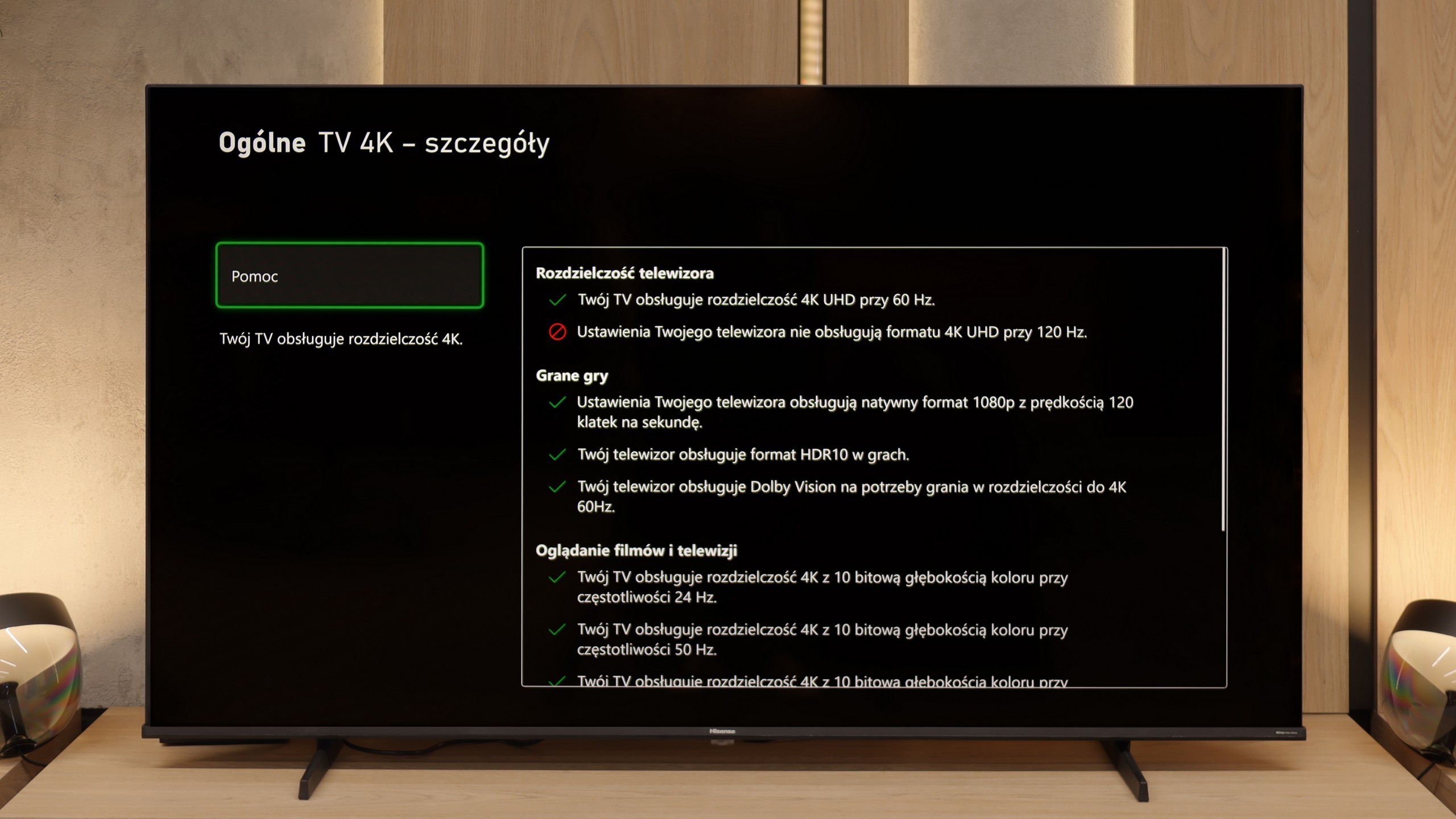

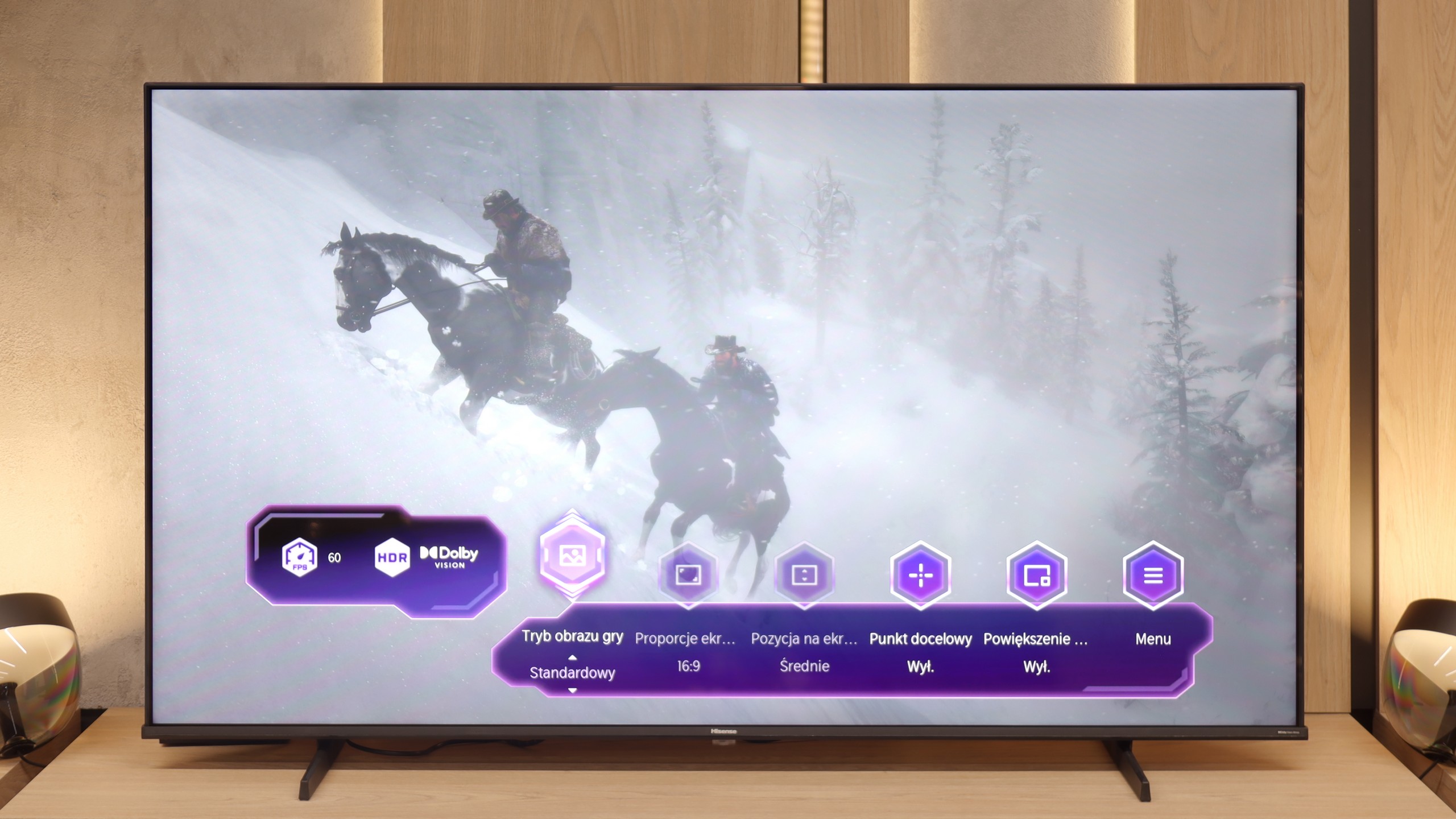

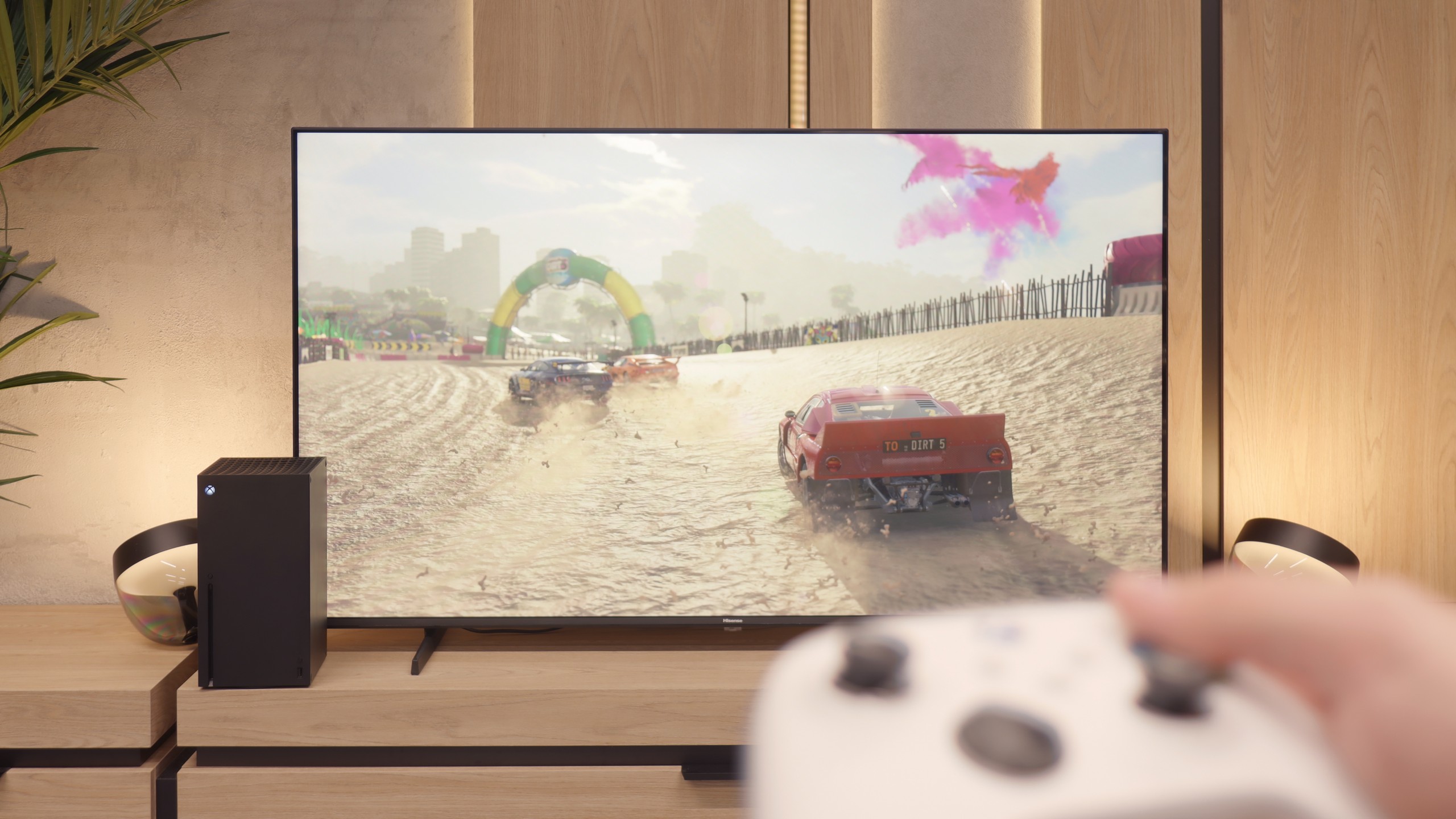
The Samsung DU7192 television is equipped only with HDMI 2.0 ports, which isn’t surprising considering the device’s price and its consumer profile. Therefore, it’s also logical that we won’t achieve maximum quality on the latest generation consoles. That’s why it only features the most basic options for gamers, namely ALLM. It’s a pity the manufacturer didn’t implement at least a GameBar, as this is now standard, even in lower-end TVs, and could offer significant conveniences in terms of quickly changing settings.
Hisense E7Q / E79Q is a really good TV for gamers, even though it doesn’t support 4K signal at 120 Hz. However, the manufacturer has included a set of features that until recently could only be found in more expensive models. There's ALLM, which is auto-switching to low latency mode, allowing the TV to activate game mode with very low input lag automatically. We also have VRR, working up to 60 Hz – while this may not look impressive on paper, in practice it is fully sufficient, as most console games don’t exceed this limit anyway. All these settings can be quickly found in the Game Bar panel, a convenient menu created specifically for gamers. From this level, you can change picture modes, turn on a frame counter, or even… an on-screen crosshair – in the Vidaa system amusingly called a “target point,” which is the result of a clumsy translation from the Chinese manufacturer.
Special praise should go to the ability to play in 1080p at 120 Hz, which significantly improves the fluidity and responsiveness of the image. This means that if someone wants to play a few titles at a higher refresh rate, they can simply lower the resolution and enjoy much smoother motion. Despite the lack of 4K@120Hz, the Hisense E7Q / E79Q really performs well as a gaming TV – especially for those who aren’t looking for perfection but a solid and fast screen for everyday gaming.
Input lag
10/10
10/10
SDR
HDR
Dolby Vision
The results of the input lag measurements in DU7192 are at a high level, regardless of the signal or resolution. All gamers will surely appreciate the manufacturer's efforts, thanks to which a game running at 4K 60 Hz with HDR will have only 11 ms of lag, which is practically unnoticeable even in online games.
In gaming, the easiest thing to notice is how fast (or slow) the TV is – and the Hisense E7Q / E79Q passes this test without a hitch. After just a few minutes of playing, you can feel that the response to the controller's movements is instantaneous, without that characteristic lag that can ruin even the best match in FIFA or a crucial exchange in a fighting game. In game mode, the E7Q / E79Q operates with a delay of under 15 ms, meaning there’s practically no gap between pressing a button and the reaction on the screen. This is a level that pricier models would be proud of. And it’s for this responsiveness – perhaps more than the picture or extras – that this TV truly deserves praise.
Compatibility with PC
6/10
3/10

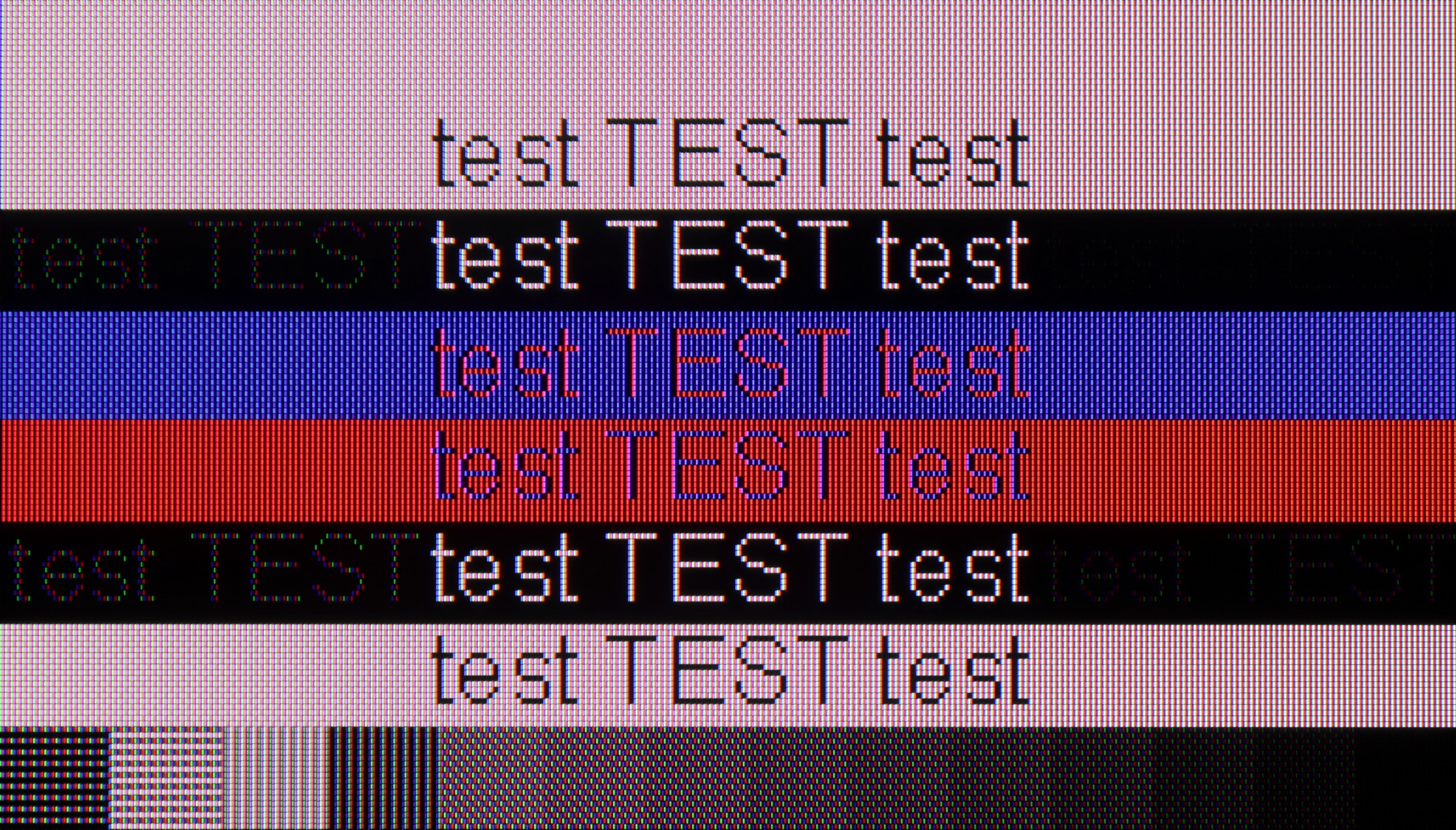
After connecting the television to the computer and wanting to use it as a monitor, we can expect a low input lag of 11 ms, which is practically imperceptible on the mouse-screen-eye line. Thanks to the proper implementation of chroma 4:4:4, the readability of fonts is at a high level, so you can confidently connect the DU7192 to a computer as a monitor and expect comfortable work with text. It's also worth mentioning that such good cooperation with the computer is also due to the IPS panel itself, which allows for very sharp fonts due to its construction. The subpixel layout is BGR, which does not negatively affect the use of the television as a monitor. However, since operating systems are not adapted to such a subpixel format, this may cause slightly less sharp outlines. This is practically negligible, and only a handful of people might notice it. As for gaming, the lack of G-Sync and a frequency of 60 Hz are limitations that may disappoint computer game enthusiasts, especially those requiring quick reactions. For this reason, the television receives a lower rating in this category, although it performs decently as a monitor for everyday work.
In terms of collaboration with the PC, the Hisense E7Q / E79Q unfortunately does not impress. Yes, the television supports full 4:4:4 chroma sampling, so text and fonts are fairly readable, but that's where the list of advantages pretty much ends. The screen has a significant issue with dithering, which in practice looks very unpleasant – as if the surface of the image subtly shimmered with colours. This is best seen with dark letters on a grey background – instead of neutral shades of the font, there are delicate flashes of blue, green, and red, resembling a rainbow effect. After extended use with the computer, this can strain the eyes and diminish comfort. On the plus side, it’s worth noting the presence of frame syncing and the ability to operate at 120 Hz at a lower resolution, which may be a small consolation for gamers. However, as a typical PC monitor, the E7Q / E79Q performs rather mediocrely.
Viewing angles
6.8/10
3.2/10
IPS panels, unlike VA panels, are known for having very good viewing angles. This is also true for Samsung DU7192, as even with a slight change in angle, the colours maintain a very good hue and saturation. However, it is worth noting the drop in contrast, which is typical for LCD panels.
Hisense E7Q / E79Q has typical VA panel weak viewing angles. Directly in front, the image looks very good – the blacks are deep, and the contrast is high. However, just sitting slightly off to the side, the situation quickly changes. At around a 45-degree angle, brightness drops by about 73%, and the colours noticeably lose their saturation. This is a typical compromise we have to pay for choosing a TV with this type of panel instead of an IPS panel. There, the viewing angles are much better, but the blacks are significantly worse.
TV efficiency during daytime
2.8/10
5.2/10

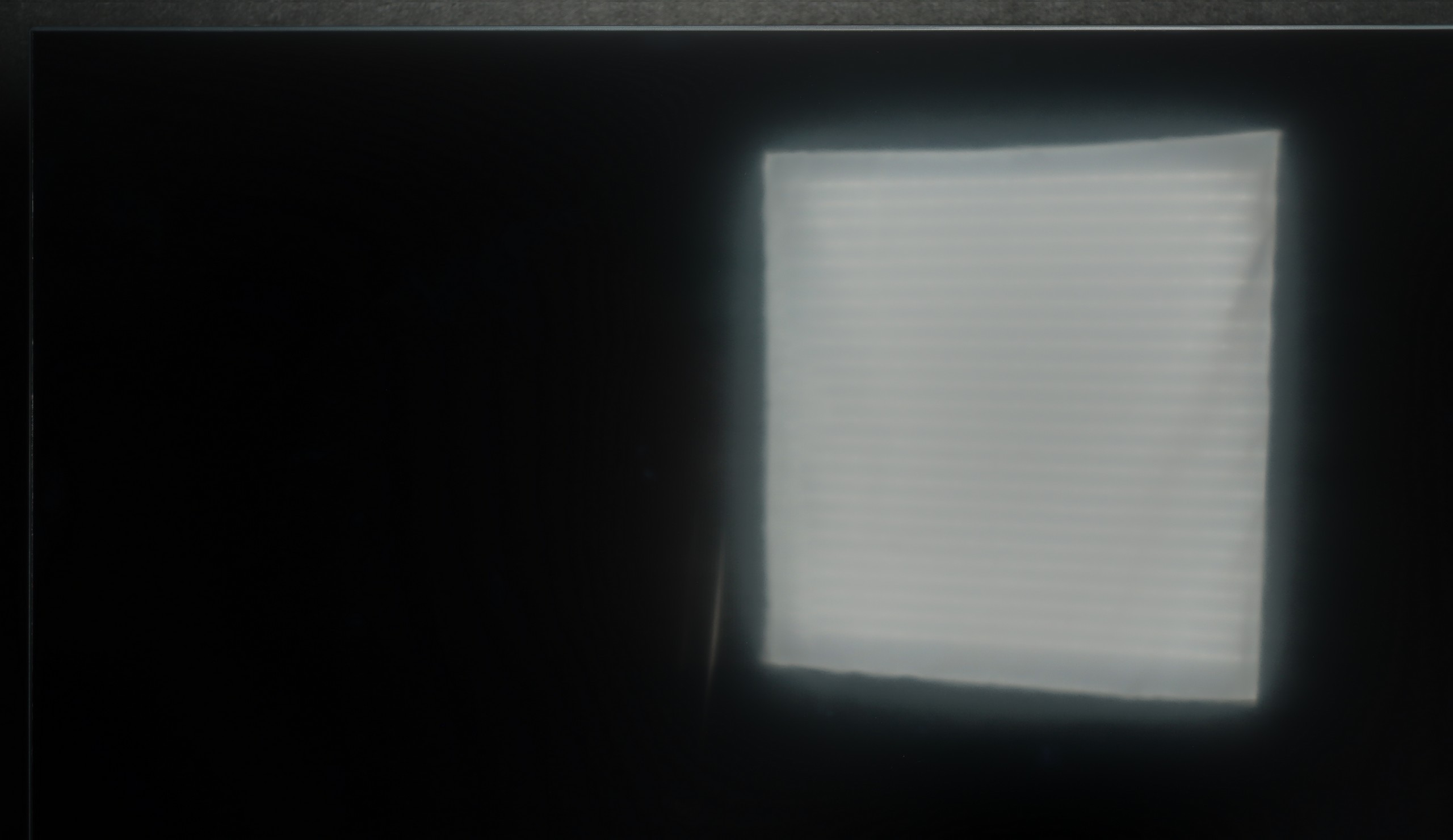

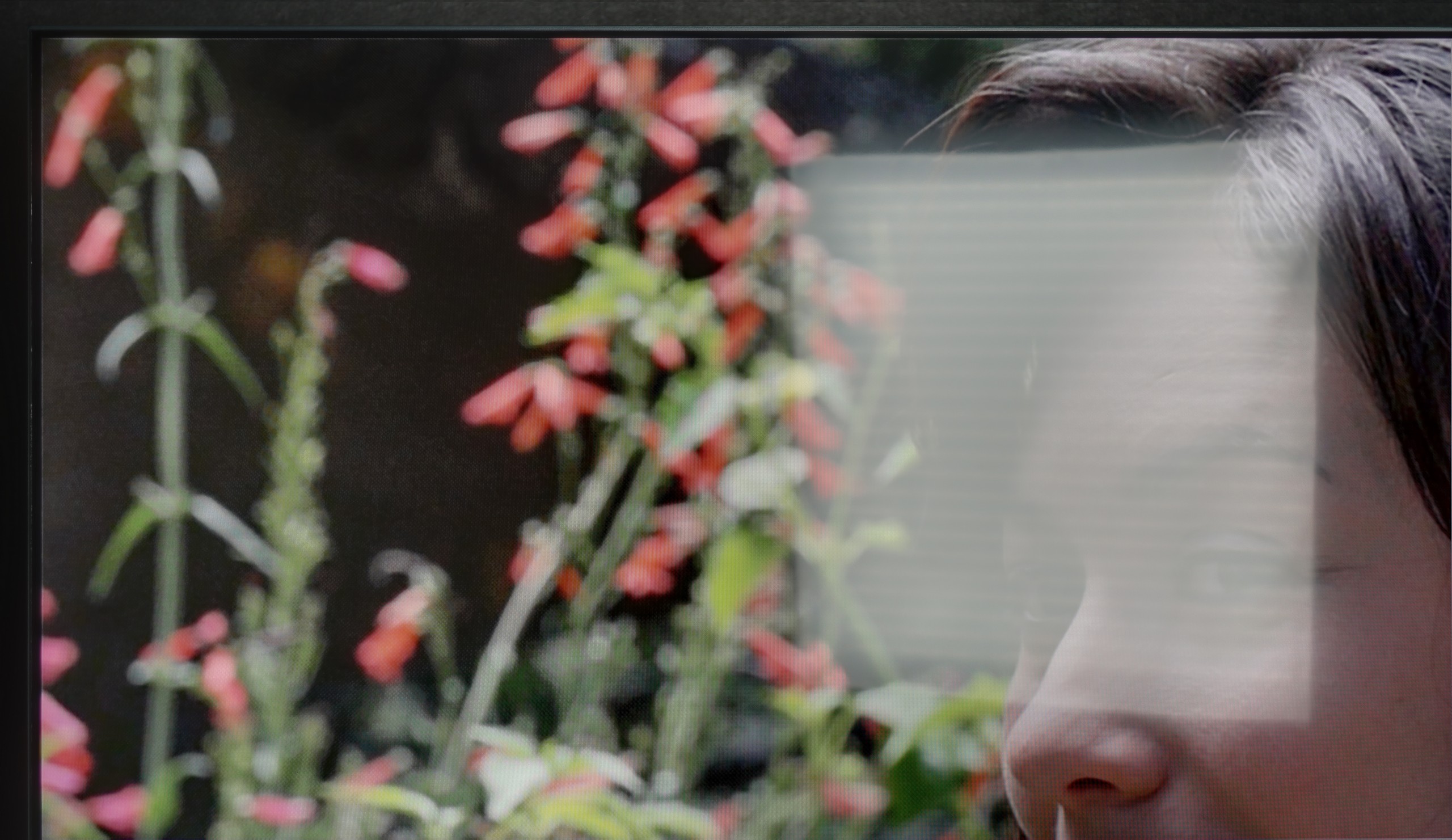
Matrix brightness
Average luminance SDR
Hisense E7Q / E79Q: 371 cd/m2
Samsung DU7192 (IPS): 227 cd/m2
The Samsung DU7192 panel has a satin finish; unfortunately, this did not help the tested television in reducing reflections directly hitting the panel. The situation is not improved by the fact that the maximum brightness of the panel in SDR materials is 227 nits. One could say that the tested television is rather not suited for daytime use.
The Hisense E7Q / E79Q performs best in moderately bright living rooms. Its brightness ranges from 350–380 nits, so in typical home conditions, the picture looks good, but in very sunny rooms, it starts to lose clarity. It’s simply not a screen for interiors with large windows or strong daylight. On the plus side, it’s worth mentioning the satin finish of the panel, which effectively reduces reflections – both from lamps and windows. As a result, even when the room isn't dim, the picture remains quite readable.
Details about the matrix
Subpixel Structure:

Panel uniformity and thermal imaging:

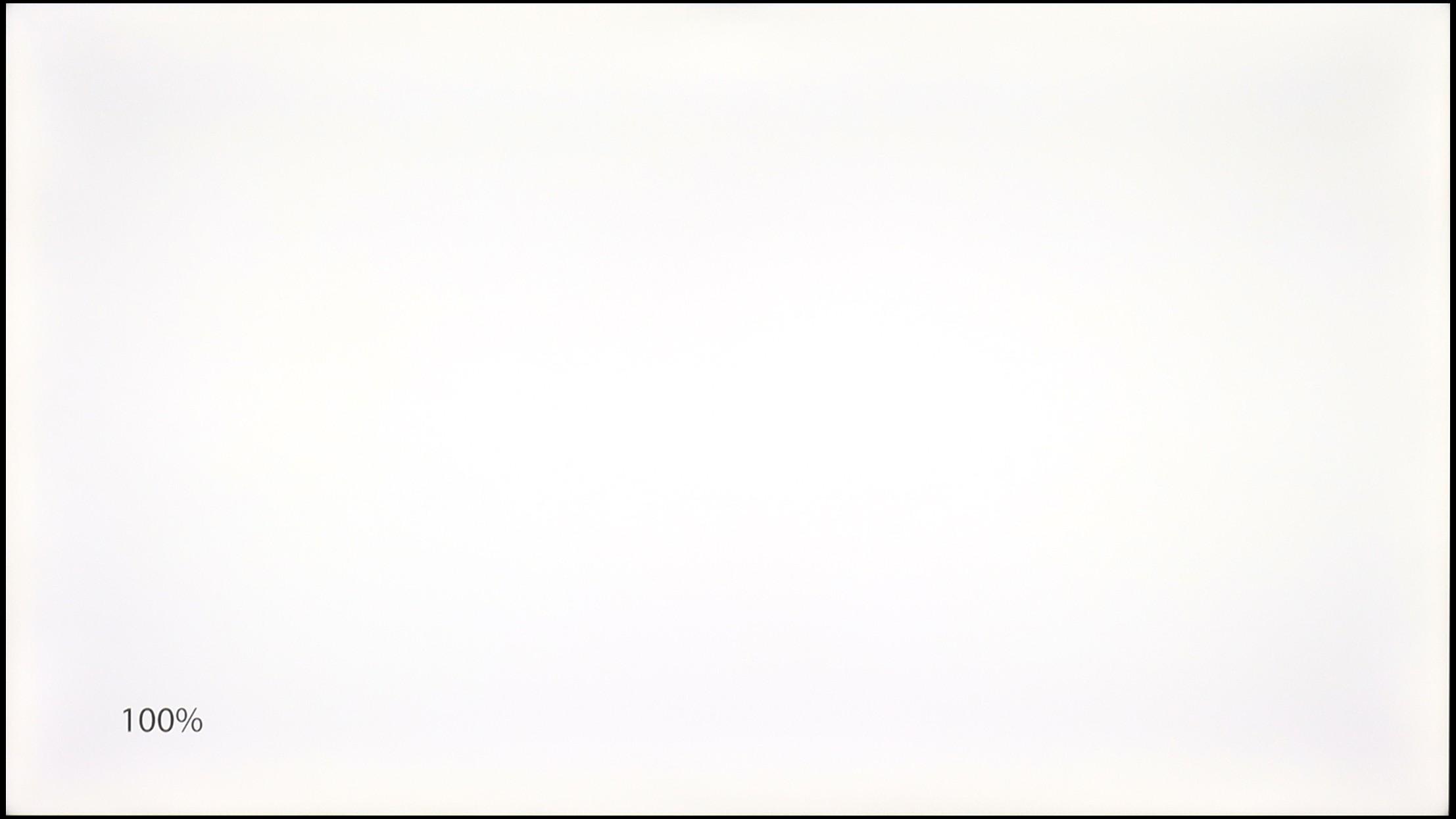
Samsung DU7192 (IPS)
Hisense E7Q / E79Q
TV features
5.5/10
8.7/10
- HDMI inputs3 x HDMI 2.0, 0 x HDMI 2.13 x HDMI 2.0, 0 x HDMI 2.1
- Other inputsComponent (YPbPr)
- OutputseARC (HDMI), ARC (HDMI)Toslink (Optical audio), eARC (HDMI), ARC (HDMI), Mini-Jack (Headphones)
- Network InterfacesWi-Fi 2.4GHz, Wi-Fi 5GHz, Ethernet (LAN) 100MbpsWi-Fi 2.4GHz, Wi-Fi 5GHz, Ethernet (LAN) 100Mbps
- TV receptionDVB-T, DVB-T2, DVB-S, DVB-S2, DVB-CDVB-T, DVB-T2, DVB-S, DVB-S2, DVB-C
Classic features:
- Recording to USB (terrestrial TV)
- Recording programming
- Picture in Picture (PiP)
- RF remote control (no need to aim at the screen)
- Backlit remote control
- Teletext
- Audio only mode
- Bluetooth headphones support
- Simultaneous Bluetooth headphones & TV audio
Smart features:
- AirPlay
- Screen mirroring (Windows Miracast)
- Voice search
- Voice search in native language
- Ability to connect a keyboard and mouse


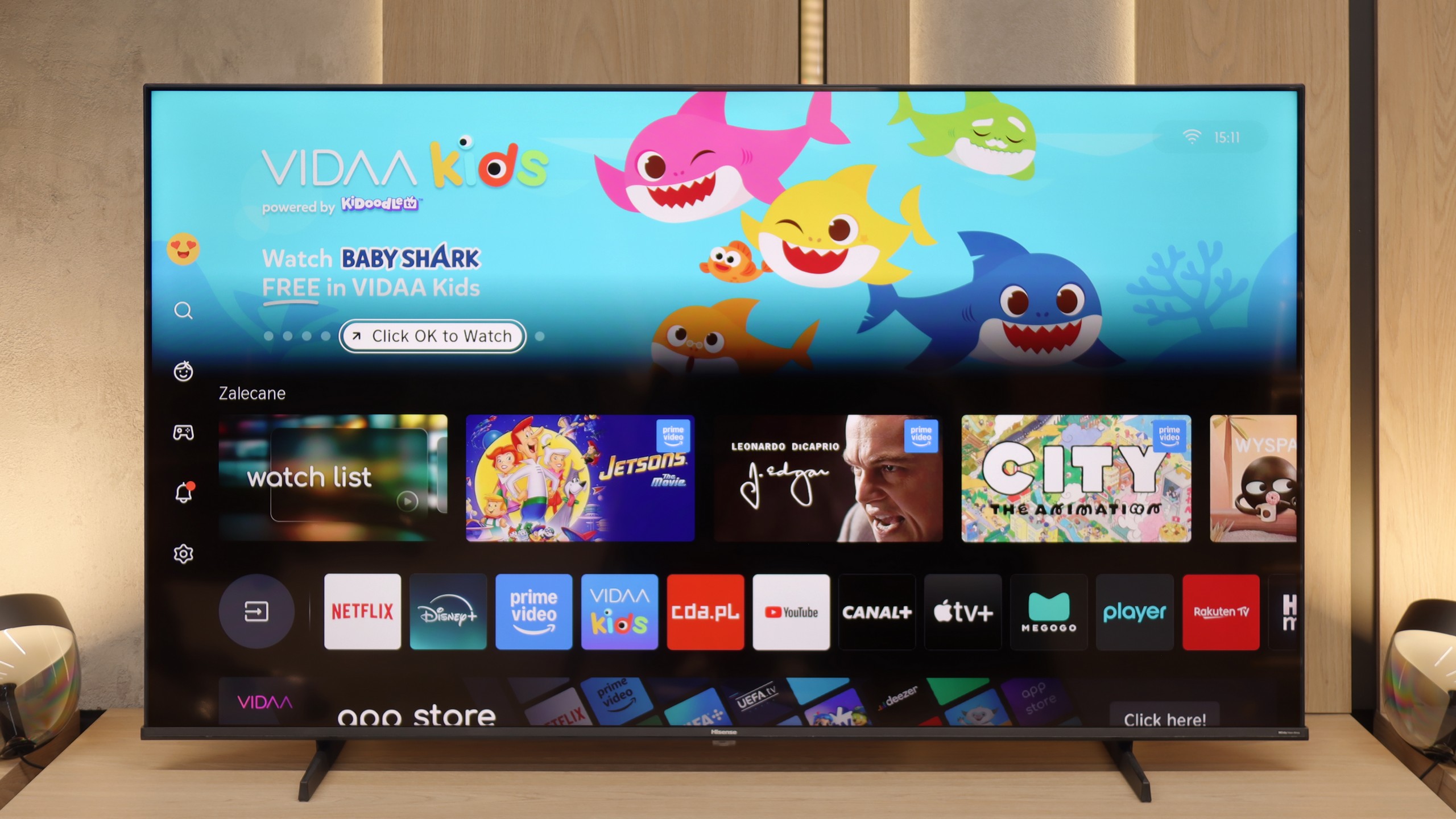
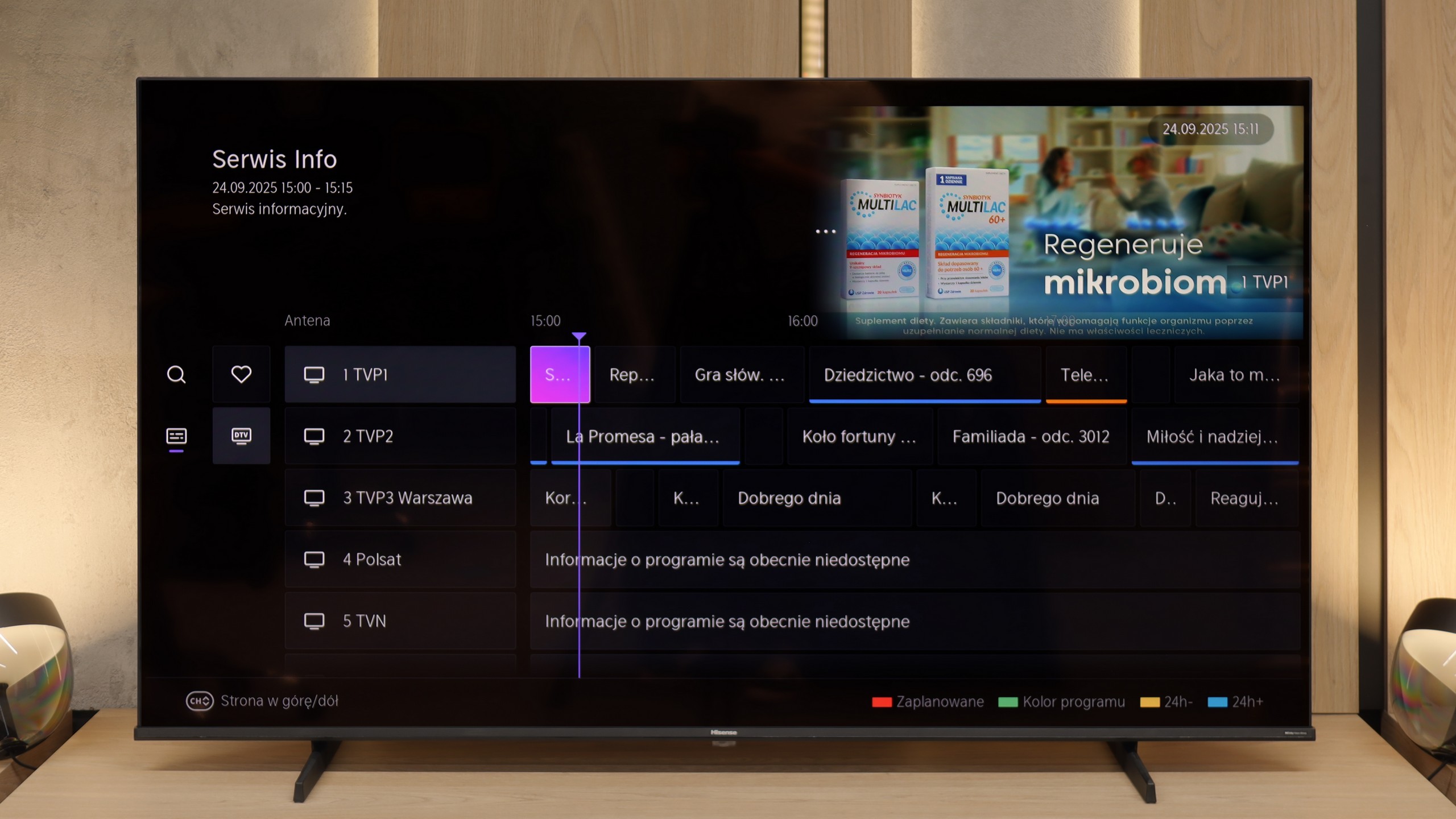
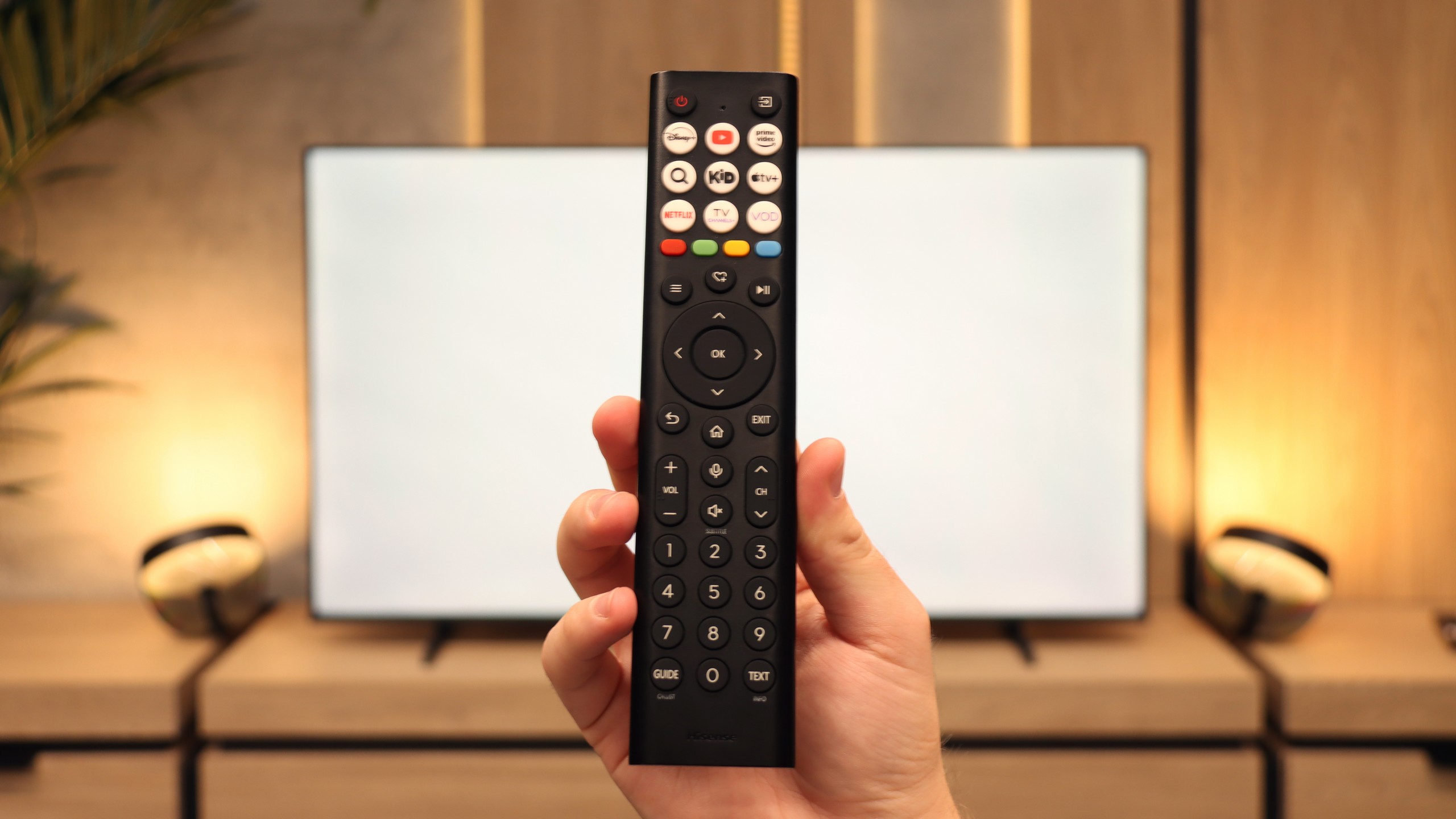
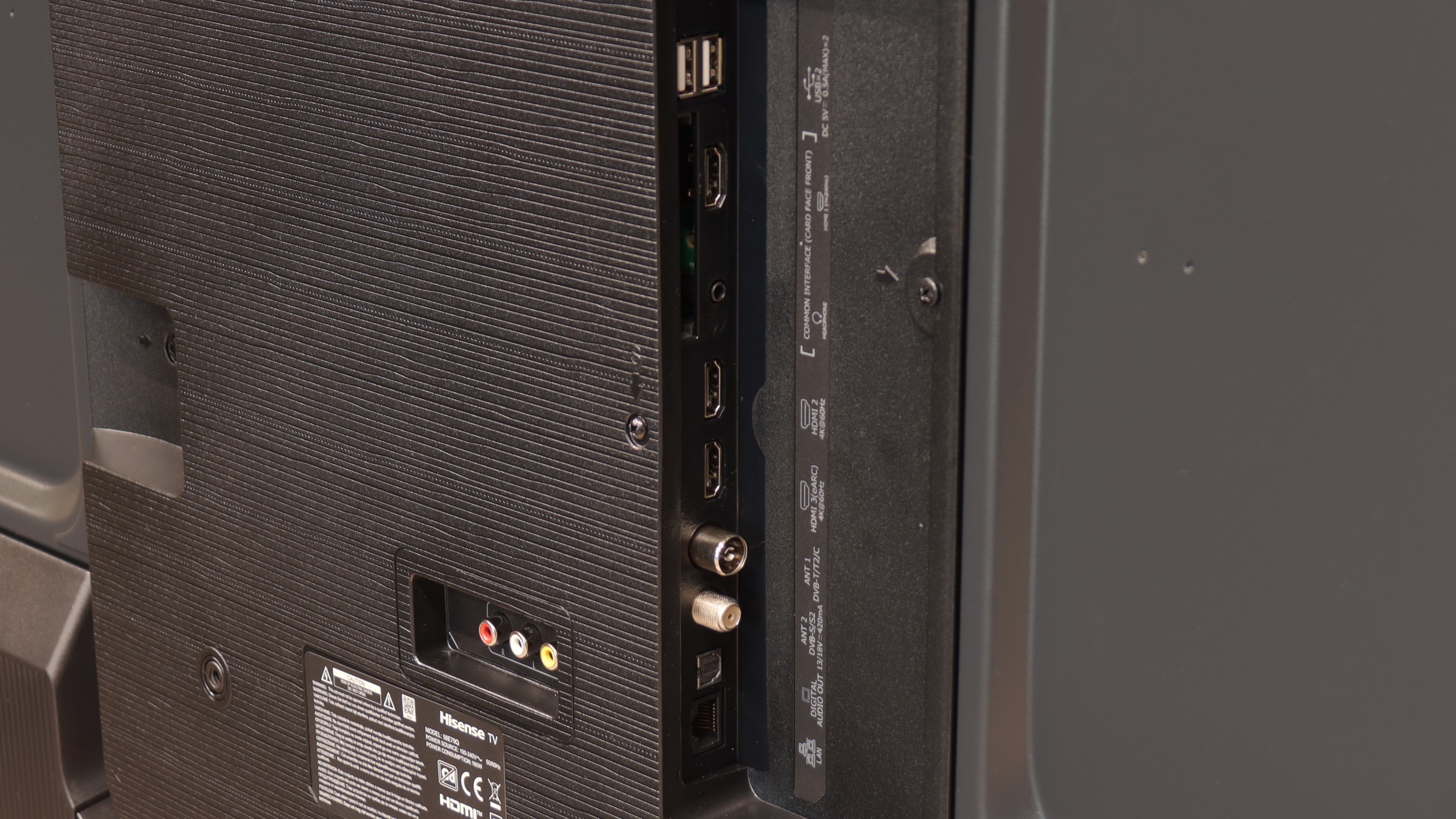
The operation of Samsung DU7192 is managed by the proprietary Tizen system. This software is quite well-known as the manufacturer has been developing it in their televisions for a really long time. Its main advantage is smooth operation and the lack of significant stutters, which we can confirm through conducted tests. The biggest downside, however, is its closed nature. Although the app store is quite extensive, we are still at the mercy of the manufacturer. Therefore, we will not be able to install missing items, even from a USB drive. On the other hand, a benefit, especially for Apple device users, is the implementation of AirPlay functionality, allowing for easy screen mirroring from a device to the television. Fortunately, Samsung has also provided the option to connect a keyboard and mouse for much quicker navigation through the television's menu. It’s worth mentioning that the manufacturer has fortunately included a Bluetooth remote this year, which was often not the case in the past. The Tizen system has one more advantage. It integrates very well with external devices, such as the NC+ decoder and soundbars. The connection process is very quick and does not require special skills.
The Tizen system is very efficient software, which is certainly a strong advantage of the television. Although more advanced users may complain about the lack of KODI, the rest will be satisfied.
SmartTV Features: Vidaa
When it comes to Smart TV features, the Hisense E7Q / E79Q operates on the VIDAA system, which has been developed by the Chinese manufacturer for several years. It’s clear that the software is maturing – it includes AirPlay, Screen Mirroring, and voice search in multiple languages, including Polish. Unfortunately, in our unit, it worked quite slowly, which surprised us a bit, as in other Hisense models, this system responded much faster. The limited app library is also a downside. Of course, the most important ones are here – Netflix, Disney+ and YouTube – but it’s worth checking before purchase to see if you can find everything you use daily.
Traditional Features
In terms of traditional television features, the E7Q performs significantly better. It offers practically everything you could expect from a classic television: recording from built-in tuners to USB, a headphone jack output, and even a component input for older audio equipment. Additionally, it fully supports audio via eARC, ensuring that, regardless of the situation, the soundbar will always “perform as required.” The remote is also quite classic, well-designed with a good number of buttons (including numerical ones), which may appeal to those who still watch regular television on the set. 😉
Playing files from USB
9.1/10
8.2/10
Supported photo formats:
Maximum photo resolution:

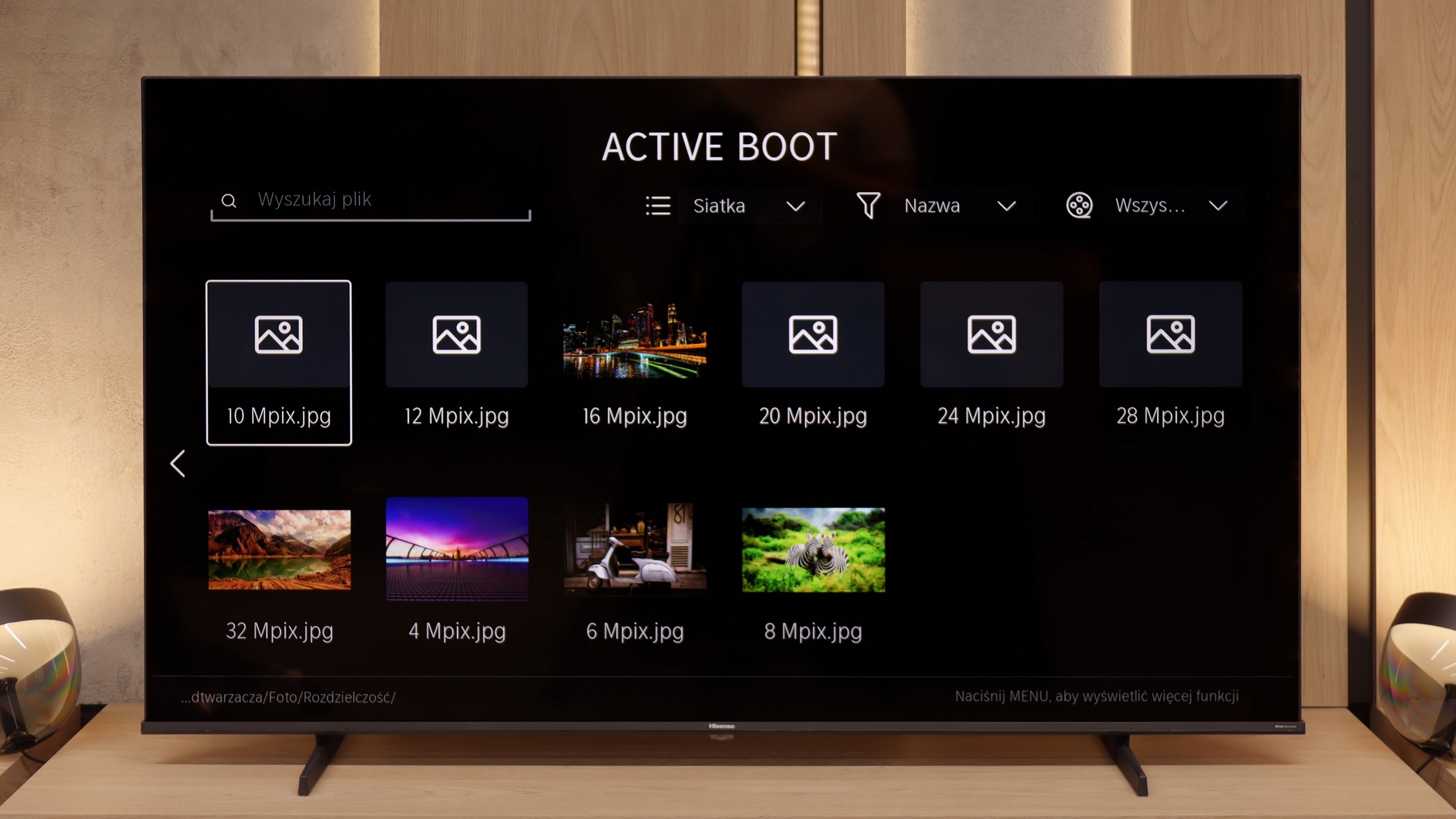
The built-in player Samsung DU7192 is a significant advantage. It handled almost all video and audio files prepared for the testing process exceptionally well. The only exceptions in this regard are, of course, the Dolby Vision format (which is not surprising) and less popular codecs. It also deserves a plus for supporting Polish characters and the ability to change font colours. However, it struggles more with image formats, as it only supports the popular JPEG. There's definitely a lack of formats like PNG or Apple's HEIC.
The media player in the Hisense E7Q / E79Q works properly, but it can be temperamental. The biggest issue concerns photo support – the TV only handles selected formats, and some files simply do not open. This is quite surprising because even cheaper models from other manufacturers usually do not have this problem. Videos and music play without major issues, however, one has to keep in mind that the E7Q is not a master of versatility when it comes to files from a USB stick. It is rather a basic player that works – provided we don't try to "surprise" it with something.
Apps
8.7/10
7.7/10














































Sound
5.4/10
6.3/10
- Maximum volume83dB83dB
- Dolby Digital Plus 7.1
- Dolby True HD 7.1
- Dolby Atmos in Dolby Digital Plus (JOC)
- Dolby Atmos in Dolby True HD
- DTS:X in DTS-HD MA
- DTS-HD Master Audio
When assessing the sound from the DU7192, it should be noted that its speakers are not the best. Unfortunately, this carries consequences in the form of very poor sound quality. We recommend using half of the volume scale due to potential distortion. Fortunately, the television offers a wide range of audio codecs, including the two most important ones: DTS-HD Master Audio and Dolby Digital Plus, which allow for the transmission of surround sound to an external device. This ensures high sound quality that will satisfy users seeking better audio experiences.
The sound on the Hisense E7Q / E79Q is exactly what you’d expect from a TV in this price range – rather flat, but fairly loud. During measurements, the maximum volume reached around 83 dB, so it’s more than sufficient for daily viewing. Dialogues are easily heard, which somewhat compensates for the lack of distinct bass and depth. There are no revelations here: it's simply a solid minimum that is acceptable. On the plus side, the wide support for audio formats is a bonus. The TV handles Dolby TrueHD, Dolby Atmos, and even the increasingly rare DTS:X. This is a nice touch because at least we can be sure that everything will play as it should, regardless of the source – especially when we connect it to an external audio source like a soundbar.
Acoustic Measurements
No acoustic data
83dBC (Max)
75dBC
